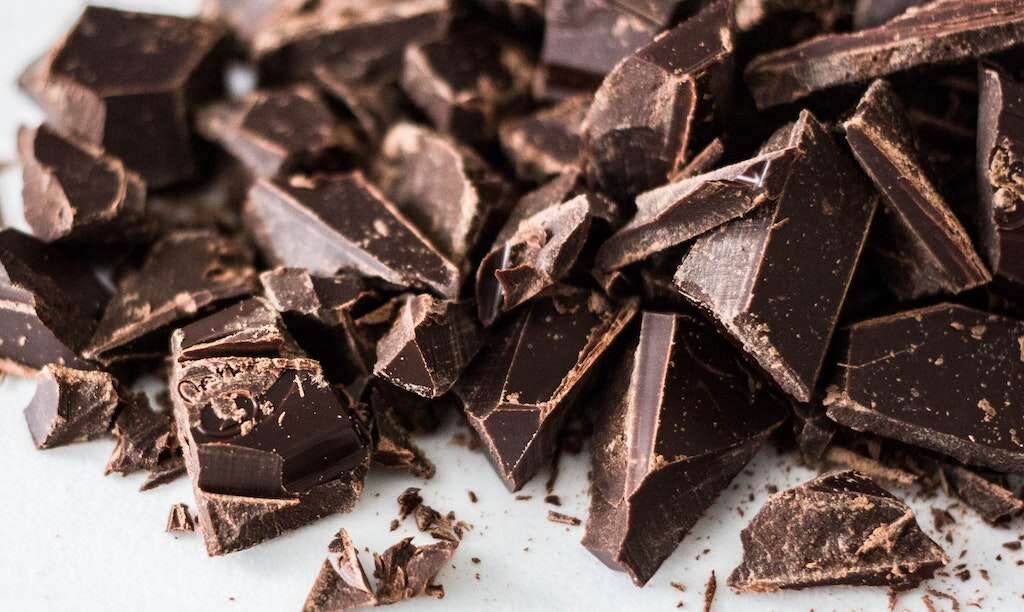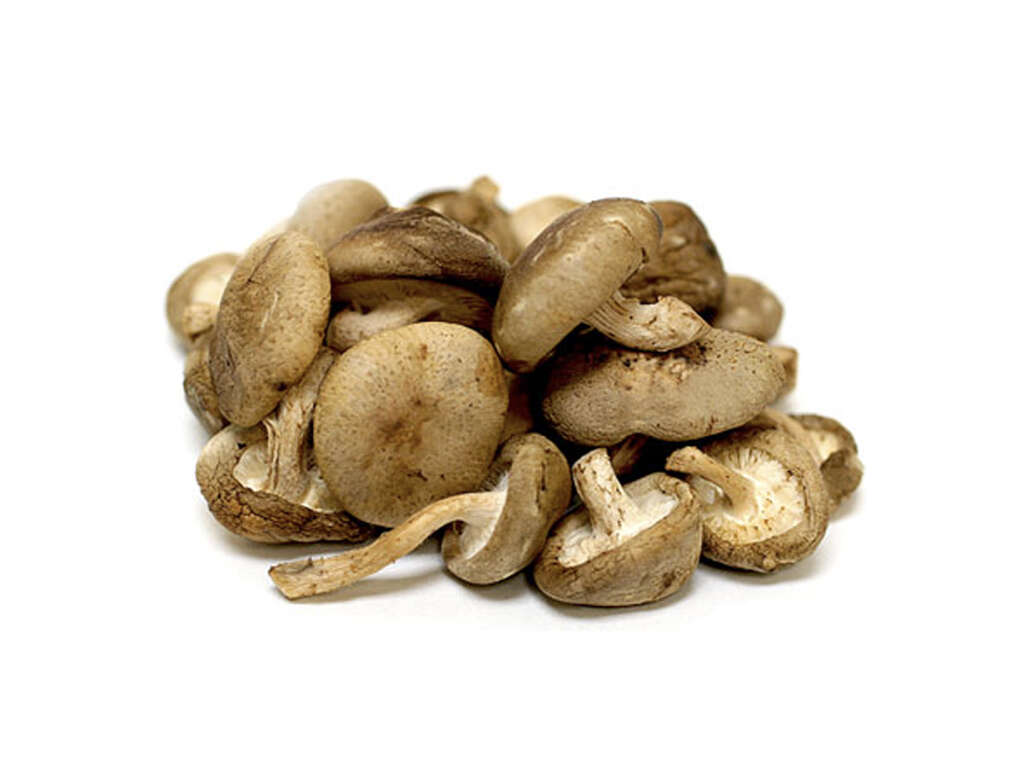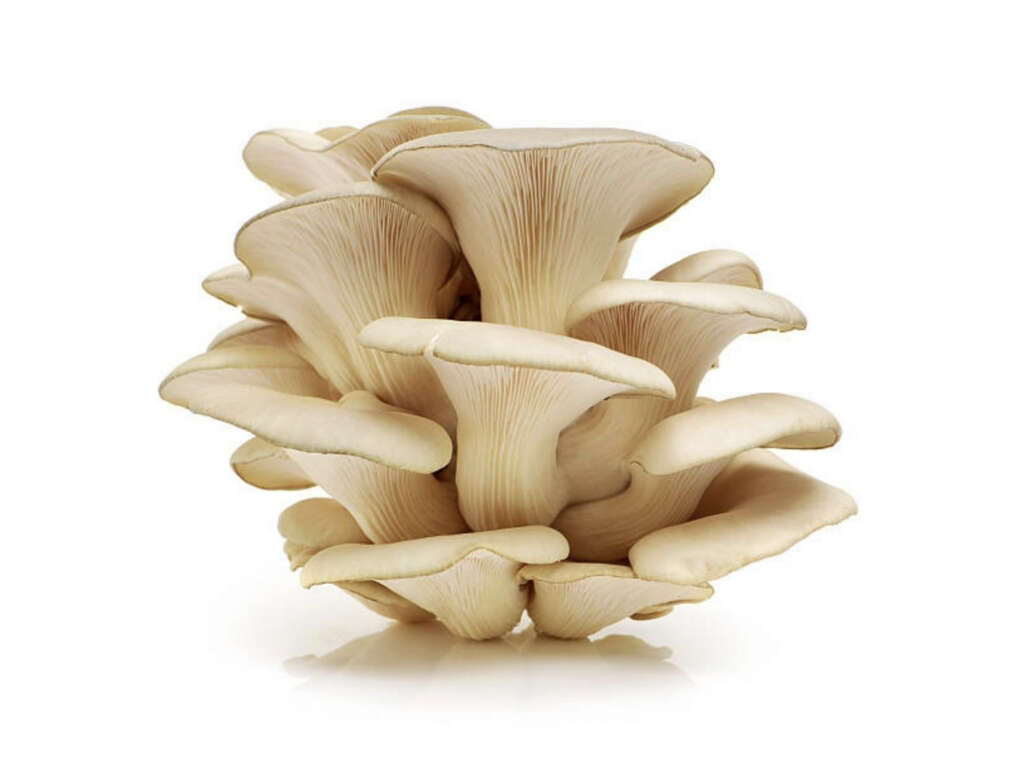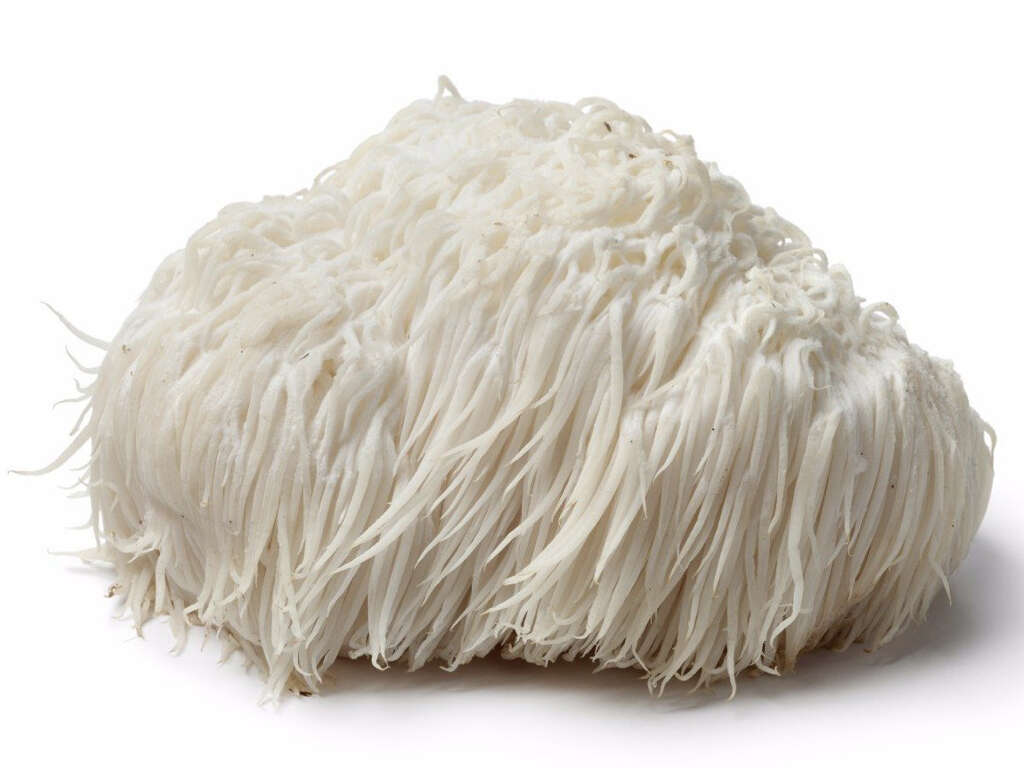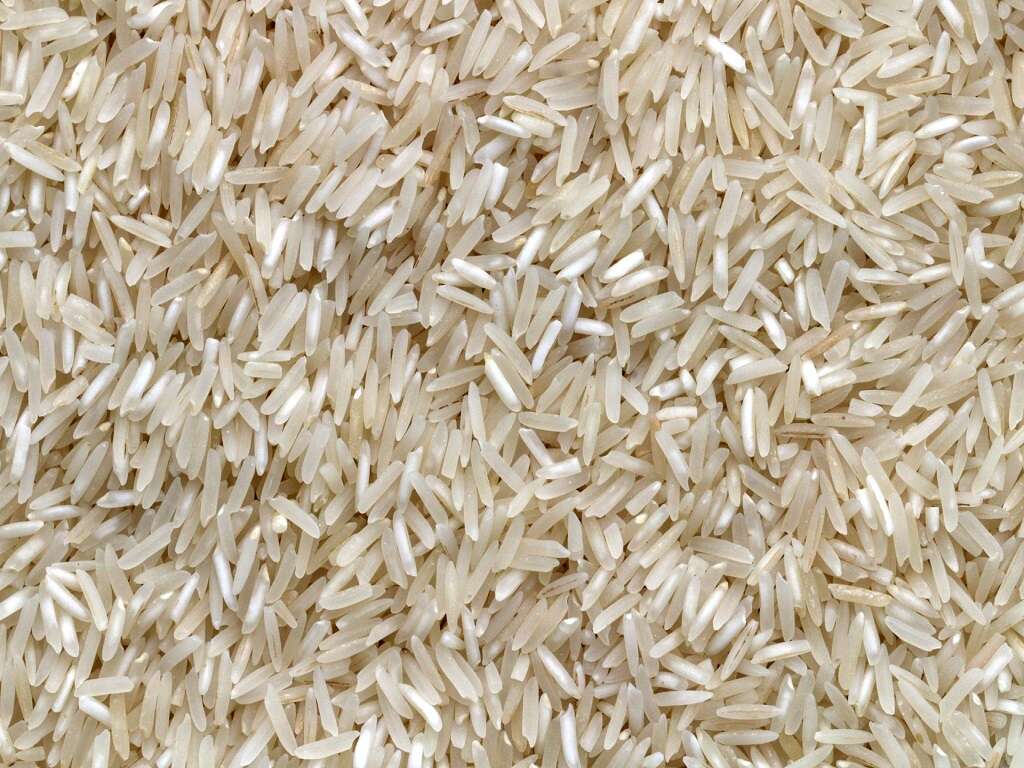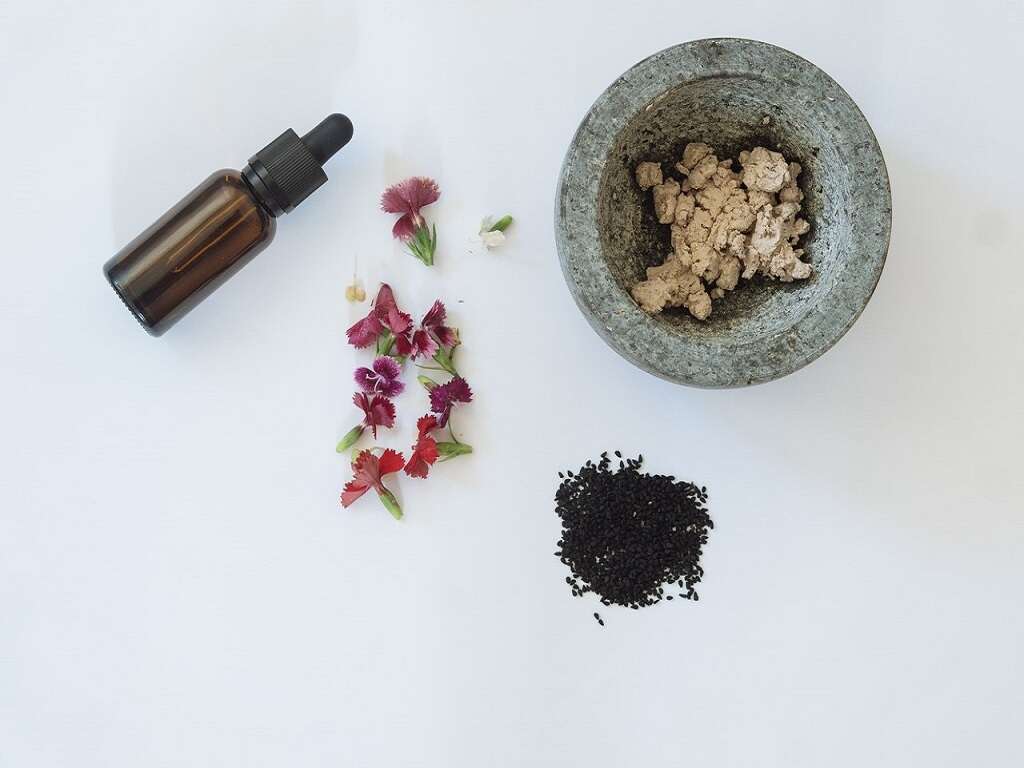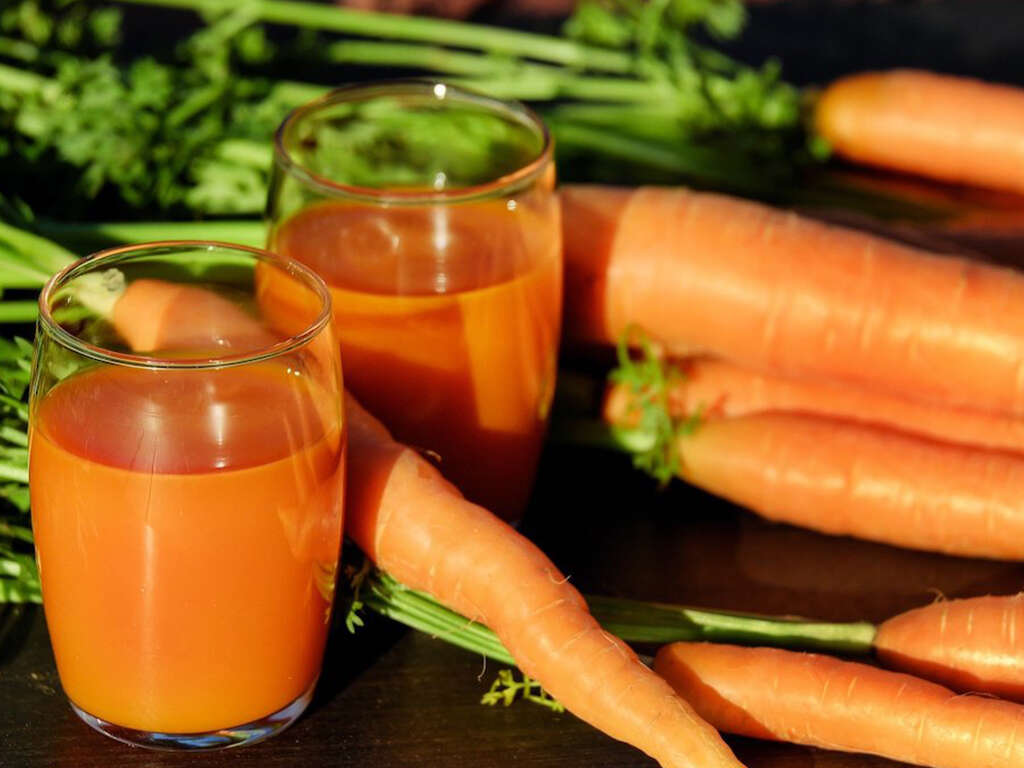50 Healthy Foods To Enjoy For Life
 Article Sources
Article Sources
- 1. 'Apples.' The Nutrition Source, 22 May 2019, www.hsph.harvard.edu/nutritionsource/food-features/apples/
- 2. Katherine D. McManus, MS. '10 Superfoods to Boost a Healthy Diet.' Harvard Health Blog, 15 Apr. 2020, www.health.harvard.edu/blog/10-superfoods-to-boost-a-healthy-diet-2018082914463
- 3. Li, Xinli, and Jiuhong Xu. 'Lycopene Supplement and Blood Pressure: an Updated Meta-Analysis of Intervention Trials.' Nutrients, MDPI, 18 Sept. 2013, www.ncbi.nlm.nih.gov/pmc/articles/PMC3798929/
- 4. Katherine Zeratsky, R.D. 'The Heart-Health Benefits of Grass-Fed Beef.' Mayo Clinic, Mayo Foundation for Medical Education and Research, 29 Apr. 2021, www.mayoclinic.org/diseases-conditions/heart-disease/expert-answers/grass-fed-beef/faq-20058059
- 5. Richardson, David P, et al. 'The Nutritional and Health Attributes of Kiwifruit: a Review.' European Journal of Nutrition, Springer Berlin Heidelberg, Dec. 2018, www.ncbi.nlm.nih.gov/pmc/articles/PMC6267416/
- 6. Publishing, Harvard Health. '12.' Harvard Health, www.health.harvard.edu/staying-healthy/12-superfoods-you-should-be-eating
- 7. Kelley, Darshan S, et al. 'A Review of the Health Benefits of Cherries.' Nutrients, MDPI, 17 Mar. 2018, www.ncbi.nlm.nih.gov/pmc/articles/PMC5872786/
- 8. 'People Who Eat Chili Pepper May Live Longer?' American Heart Association, newsroom.heart.org/news/people-who-eat-chili-pepper-may-live-longer?preview=8ca6
- 9. Admin. 'How Almonds Can Improve Your Heart Health.' Health Essentials from Cleveland Clinic, Health Essentials from Cleveland Clinic, 10 Nov. 2020, health.clevelandclinic.org/how-almonds-can-improve-your-heart-health/
- 10. Chen, Jiezhong, and Kenneth Raymond. 'Beta-Glucans in the Treatment of Diabetes and Associated Cardiovascular Risks.' Vascular Health and Risk Management, Dove Medical Press, 2008, www.ncbi.nlm.nih.gov/pmc/articles/PMC2663451/
- 11. S;, Rao AV;Agarwal. 'Role of Antioxidant Lycopene in Cancer and Heart Disease.' Journal of the American College of Nutrition, U.S. National Library of Medicine, pubmed.ncbi.nlm.nih.gov/11022869/
- 12. Choi, In Hwa, et al. 'Kimchi, a Fermented Vegetable, Improves Serum Lipid Profiles in Healthy Young Adults: Randomized Clinical Trial.' Journal of Medicinal Food, Mary Ann Liebert, Inc., Mar. 2013, www.ncbi.nlm.nih.gov/pmc/articles/PMC3598433/
- 13. Ingram, Donald K. 'Blue Versus Gray: Potential Health Benefits of Blueberries for Successful Aging.' OUP Academic, Oxford University Press, 8 Apr. 2019, academic.oup.com/biomedgerontology/article-abstract/74/7/965/5445331
- 14. 'Walnuts & Weight: What the Science Says.' California Walnuts, 16 Oct. 2018, walnuts.org/health-topic/walnuts-weight-what-the-science-says/?back=health_topic_category-28
- 15. 'Lentils.' The Nutrition Source, 28 Oct. 2019, www.hsph.harvard.edu/nutritionsource/food-features/lentils/
- 16. Pustjens, Annemieke M, et al. 'Characterization of Retail Conventional, Organic, and Grass Full-Fat Butters by Their Fat Contents, Free Fatty Acid Contents, and Triglyceride and Fatty Acid Profiling.' Foods (Basel, Switzerland), MDPI, 31 Mar. 2017, www.ncbi.nlm.nih.gov/pmc/articles/PMC5409314/
- 17. 'Are Eggs Good for You or Not?' Www.heart.org, www.heart.org/en/news/2018/08/15/are-eggs-good-for-you-or-not
- 18. Team, Wellness. '6 Surprising Ways Garlic Boosts Your Health.' Health Essentials from Cleveland Clinic, Health Essentials from Cleveland Clinic, 7 Dec. 2020, health.clevelandclinic.org/6-surprising-ways-garlic-boosts-your-health/
- 19. '9 Reasons Why (the Right Amount of) Coffee Is Good for You.' Johns Hopkins Medicine, www.hopkinsmedicine.org/health/wellness-and-prevention/9-reasons-why-the-right-amount-of-coffee-is-good-for-you
People often talk about which foods are bad, or which foods to avoid. As science continues to prove that food and beverage choices have an essential role in our health, it's more important than ever to know which foods we should eat and enjoy.
The Dietary Guidelines for Americans encourages a meal plan filled with a wide variety of nutrient-dense foods, including plenty of vegetables, some legumes, and fruits, as well as whole grain, protein and dairy foods. While no single food is super enough to provide every nutritional benefit, here are 50 favorites to provide a delicious, well-balanced diet for a lifetime.
1. Apples
The original health food, apples, are among the most popular fruits produced worldwide. While most people have eaten several bushels-full in their lifetime, chances are they haven't tried all 7,500 varieties.
More unusual apples such as the red-fleshed Lucy Glo and the juicy-crisp yellow Opal offer a fun way to change things up, especially for people who believe an apple a day keeps the doctor away. For about 95 calories, one medium-sized apple is loaded with fiber, vitamin C and phytochemicals that may protect against cardiovascular disease, type 2 diabetes and certain cancers.1‘Apples.’ The Nutrition Source, 22 May 2019, www.hsph.harvard.edu/nutritionsource/food-features/apples/
2. Chickpeas
Chickpeas, also known as garbanzo beans, belong to a broad category of legumes. Just like kidney beans, black beans, soybeans and green peas, they offer an excellent source of plant-based protein along with fiber and folate.
Studies show chickpeas could help reduce the risk of heart disease.2Katherine D. McManus, MS. ‘10 Superfoods to Boost a Healthy Diet.’ Harvard Health Blog, 15 Apr. 2020, www.health.harvard.edu/blog/10-superfoods-to-boost-a-healthy-diet-2018082914463 Available dried or canned, they're easy to add to everyday salads, soups, casseroles and chili. Mashed chickpeas are also the main ingredient in hummus, a savory dip and sandwich spread. Try it as a healthy alternative to mayo.

3. Shellfish
Shrimp, crab, lobster, scallops, oysters and mussels have been eaten around the world for centuries. Yet, people often wonder if shellfish is healthy or not.
Consider shellfish a protein and nutrition-packed delicacy. They contain all the essential amino acids that support healthy cell and muscle function, plus difficult-to-get minerals zinc, copper, iron and selenium. For people worried about cholesterol, shellfish have lower amounts than what's found in chicken or beef.
4. Watermelon
Sweet, juicy and refreshing, there's no need to wait for a summer picnic to enjoy a piece of watermelon. Available throughout the year, watermelon supports whole-body wellness with vitamins A, B6 and C, plus potassium, magnesium, thiamine and phosphorus.
Watermelon also contains lycopene, a carotenoid that's been shown to promote heart health. Researchers are currently studying lycopene's potential to reduce blood pressure in people with hypertension.3Li, Xinli, and Jiuhong Xu. ‘Lycopene Supplement and Blood Pressure: an Updated Meta-Analysis of Intervention Trials.’ Nutrients, MDPI, 18 Sept. 2013, www.ncbi.nlm.nih.gov/pmc/articles/PMC3798929/ Comprised of 92 percent water, watermelon offers a nutrient-dense boost of hydration and happiness.
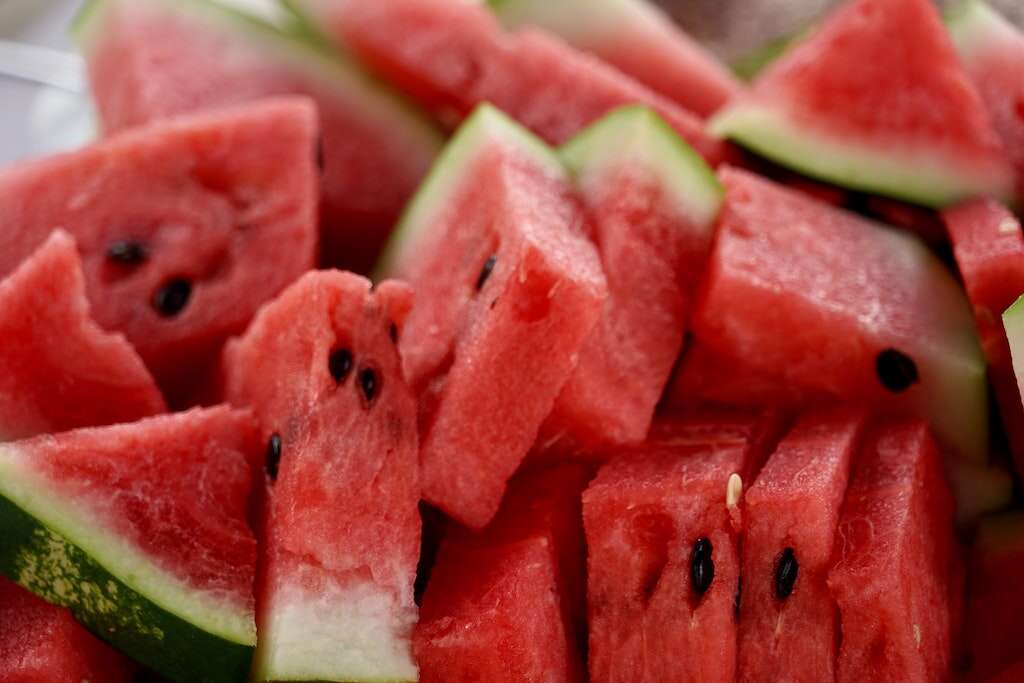
5. Cauliflower
Cauliflower has been getting a lot more attention, and for good reason. This nutritional superstar is fat-free, cholesterol-free and low in sodium, carbohydrates and calories. It's also quite versatile when it comes to meal prep. Cauliflower can be steamed, riced, pureed, mashed, or even sliced into steaks and roasted.
Some people shy away from cruciferous vegetables like cauliflower because of the distinct odor. However, that odor comes from sulfur-containing compounds that may help reduce the risk of cancer.
6. Pumpkin
Pumpkins can be more than Halloween decorations and Thanksgiving pie. That vibrant orange color comes from beta-carotene, an essential antioxidant that may support eye health and boost immunity.
Pumpkin is a nutrient-dense food, which means it's low in calories and packed with vitamins and minerals, including potassium and iron. People often use pumpkin as a substitute for oil, butter or eggs, but it's also a delicious addition to savory soups and sauces. Roast the seeds for a boost of magnesium, zinc and fiber.
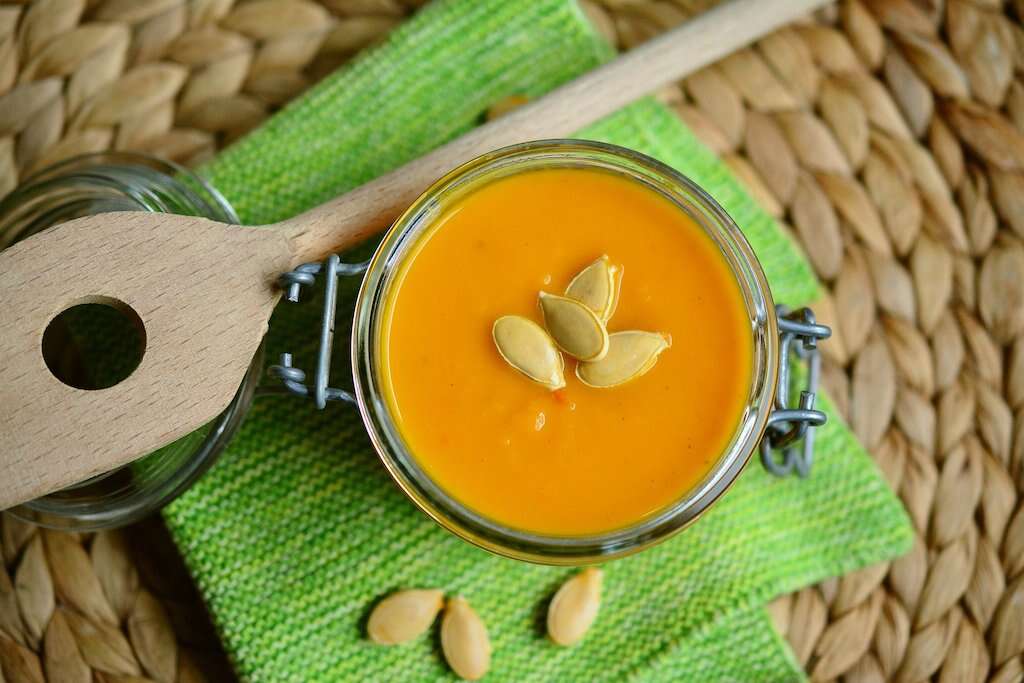
7. Kefir
For people looking to add more fermented foods to their diet, kefir is a drinkable option. This slightly fizzy and tangy beverage is commonly made with milk and a starter culture of bacteria and yeasts.
While similar to yogurt, kefir contains more gut-friendly probiotics. These live organisms may improve digestive health and help reduce inflammation. Kefir is also lower in lactose, higher in protein and rich in B vitamins and calcium.
8. Grass-Fed Beef
The nutrients and fats people get from beef may depend on the type of beef they eat. While conventional beef cattle are fed a diet of grains and corn, grass-fed beef comes from cattle that have consumed only grass and other foraged foods.
Early research shows grass-fed beef may boast more heart-health benefits than other types. In addition to being lower in fat, grass-fed beef may contain more heart-healthy omega-3 fatty acids, linoleic acid and vitamin E.4Katherine Zeratsky, R.D. ‘The Heart-Health Benefits of Grass-Fed Beef.’ Mayo Clinic, Mayo Foundation for Medical Education and Research, 29 Apr. 2021, www.mayoclinic.org/diseases-conditions/heart-disease/expert-answers/grass-fed-beef/faq-20058059 Some people think grass-fed beef tastes better too.

9. Kiwifruit
Kiwifruit is a large berry with a sweet, tart flavor and pleasing texture that can be scooped with a spoon. The seeds provide a delicate crunch, and the skin is edible too.
While small in size, kiwis boast exceptionally high amounts of vitamin C and dietary fiber. Both green and gold varieties of kiwi are rich in antioxidants that may protect the body from inflammation and disease. One study also links kiwifruit to a reduction in wheezing for asthma patients, particularly among children.5Richardson, David P, et al. ‘The Nutritional and Health Attributes of Kiwifruit: a Review.’ European Journal of Nutrition, Springer Berlin Heidelberg, Dec. 2018, www.ncbi.nlm.nih.gov/pmc/articles/PMC6267416/
10. Salmon
Salmon is very high in omega-3 fatty acids. This type of healthy fat may slow the formation of artery-clogging plaques, reduce blood pressure and protect against irregular heartbeats that can lead to heart attacks.
Omega-3s also have anti-inflammatory properties that may help relieve the painful symptoms of arthritis. According to The American Heart Association, people should aim to eat salmon or other fatty fish at least twice a week.6Publishing, Harvard Health. ‘12.’ Harvard Health, www.health.harvard.edu/staying-healthy/12-superfoods-you-should-be-eating It also happens to be a good source of protein.
11. Seaweed
A member of the algae family, seaweed is a food source for ocean life and humans alike. This vegetable of the sea contains a wide range of health-boosting vitamins and minerals. It's also an extraordinary source of iodine, a nutrient that's critical to thyroid health.
Seaweed is a familiar ingredient in Asian cuisine where it's used in everything from sushi rolls to soups and salads. At the supermarket, look for dried nori snacks or a powdered algae similar to seaweed, called spirulina , to enhance smoothies.

12. Cherries
Not a lot of foods contain melatonin, but cherries are a delicious exception. For people struggling to get a good night's rest, cherries and cherry juice may help promote healthy sleep and regulate the sleep-wake cycle.
Both types of cherries, sweet and tart, are also rich in vitamin C and polyphenols, which have powerful antioxidant and anti-inflammatory effects. Research shows cherries might support heart and gut health and boost exercise performance and recovery.7Kelley, Darshan S, et al. ‘A Review of the Health Benefits of Cherries.’ Nutrients, MDPI, 17 Mar. 2018, www.ncbi.nlm.nih.gov/pmc/articles/PMC5872786/

13. Chili Peppers
Data from four international studies indicates that eating chili peppers may help lower the risk of cancer and cardiovascular disease and promote longevity. While the reasons aren't exactly yet clear, one theory attributes the health benefits to capsaicin.8‘People Who Eat Chili Pepper May Live Longer?’ American Heart Association, newsroom.heart.org/news/people-who-eat-chili-pepper-may-live-longer?preview=8ca6
Capsaicin is the potent compound in chili peppers that provides their characteristic spicy heat. It's also a powerful antioxidant with anti-inflammatory properties. Chili peppers come in a wide array of shapes, colors and sizes. In general, the smaller peppers pack more heat than the big ones.
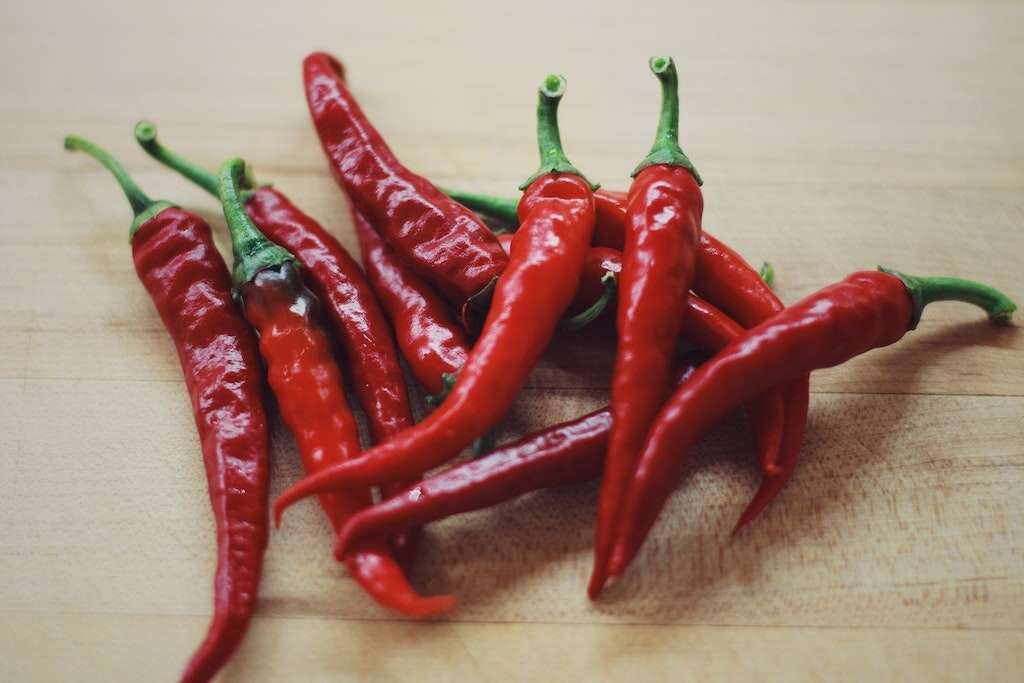
14. Quinoa
Not many plants are complete proteins, but quinoa is one of them. That means it contains all nine essential amino acids the body needs. Quinoa is also rich in manganese, phosphorus, magnesium, folate and thiamine and naturally gluten-free.
While technically a seed, quinoa is classified as a pseudo-grain. It can be prepared similarly to rice, added to soups and salads and even popped like popcorn. The white and yellow varieties offer the mildest flavor.
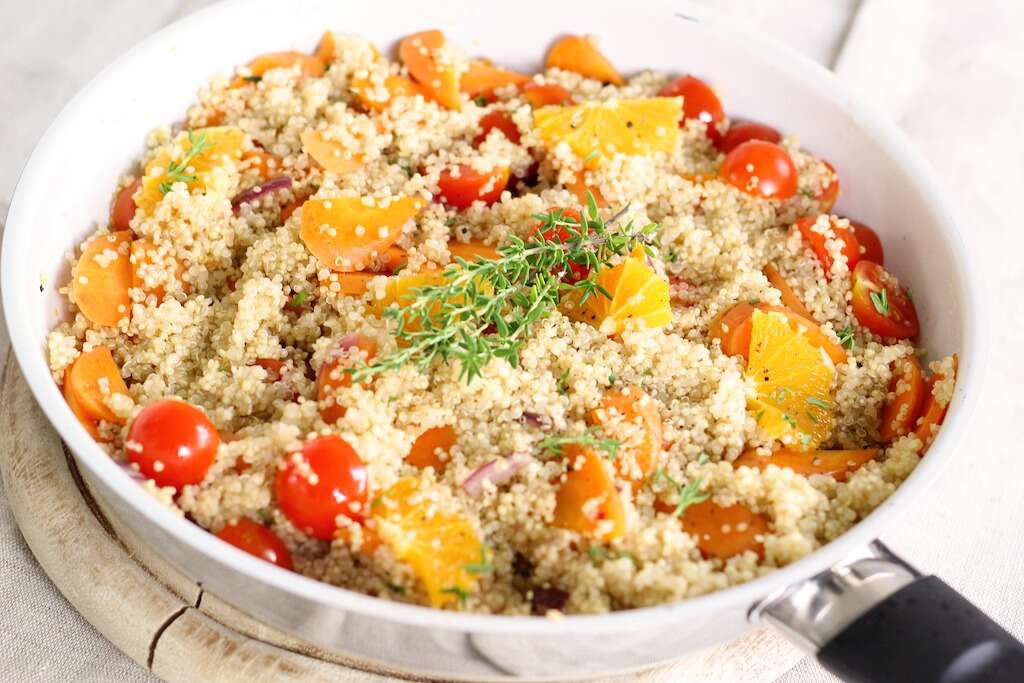
15. Sardines
Sardines aren't the typical fish of choice in the United States. However, their nutritional value brings a lot to the table. As a fatty fish, sardines are high in omega-3 fatty acids that work to protect the cardiovascular system. They're also an excellent source of vital nutrients, including vitamin B12, vitamin D and calcium.
Sardines are sometimes recommended for pregnant women and older adults. People enjoy eating them right out of the can, as a snack with crackers and condiments or tossed into a Greek salad.

16. Almonds
Offering a balance of protein, energy, fat and fiber, almonds are possibly nature's most perfect crunchy snack. They help people feel full and satisfied and provide an easy way to load up on important vitamins and minerals.
Compared with other tree nuts, almonds provide more protein, fiber, calcium, riboflavin, niacin and vitamin E. Studies suggest eating an ounce of almonds a day may help reduce the risk of heart disease.9Admin. ‘How Almonds Can Improve Your Heart Health.’ Health Essentials from Cleveland Clinic, Health Essentials from Cleveland Clinic, 10 Nov. 2020, health.clevelandclinic.org/how-almonds-can-improve-your-heart-health/ One ounce is about a handful, or 23 almonds.
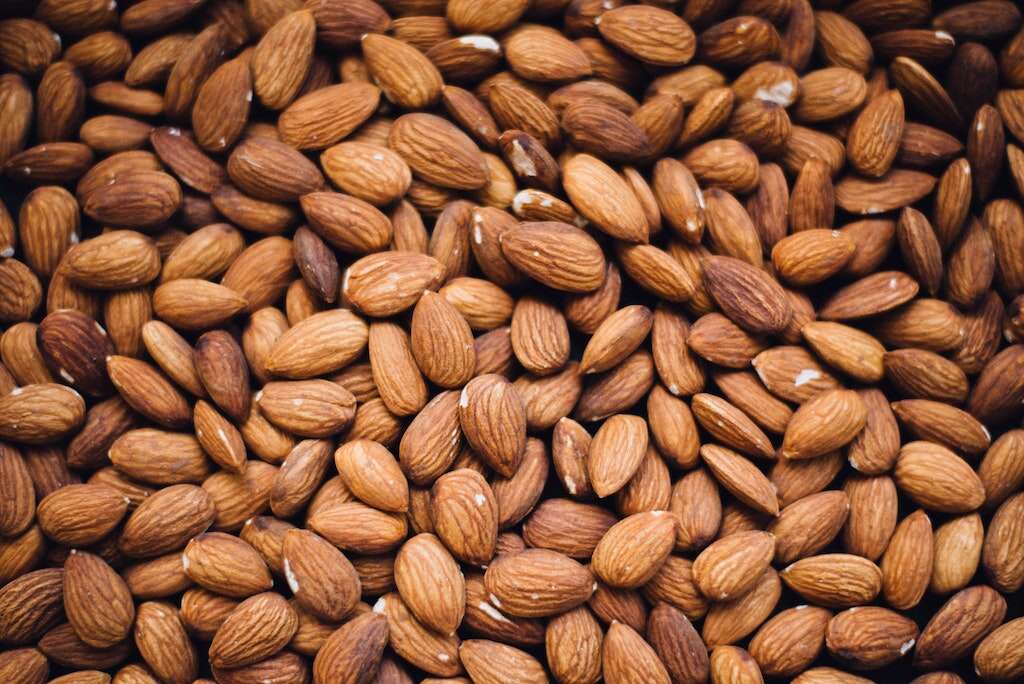
17. Oats
A globally beloved breakfast, oatmeal's best health attribute comes from fiber. Oats contain a specific type called beta-glucan, which is found in lower amounts in other grains.
Studies show dietary intake of beta-glucan may help lower cholesterol and reduce the risk of diabetes, hypertension and cardiovascular disease.10Chen, Jiezhong, and Kenneth Raymond. ‘Beta-Glucans in the Treatment of Diabetes and Associated Cardiovascular Risks.’ Vascular Health and Risk Management, Dove Medical Press, 2008, www.ncbi.nlm.nih.gov/pmc/articles/PMC2663451/ To enjoy the most health benefits, opt for steel-cut or Irish oats and avoid instant varieties with added sweeteners or artificial flavorings.
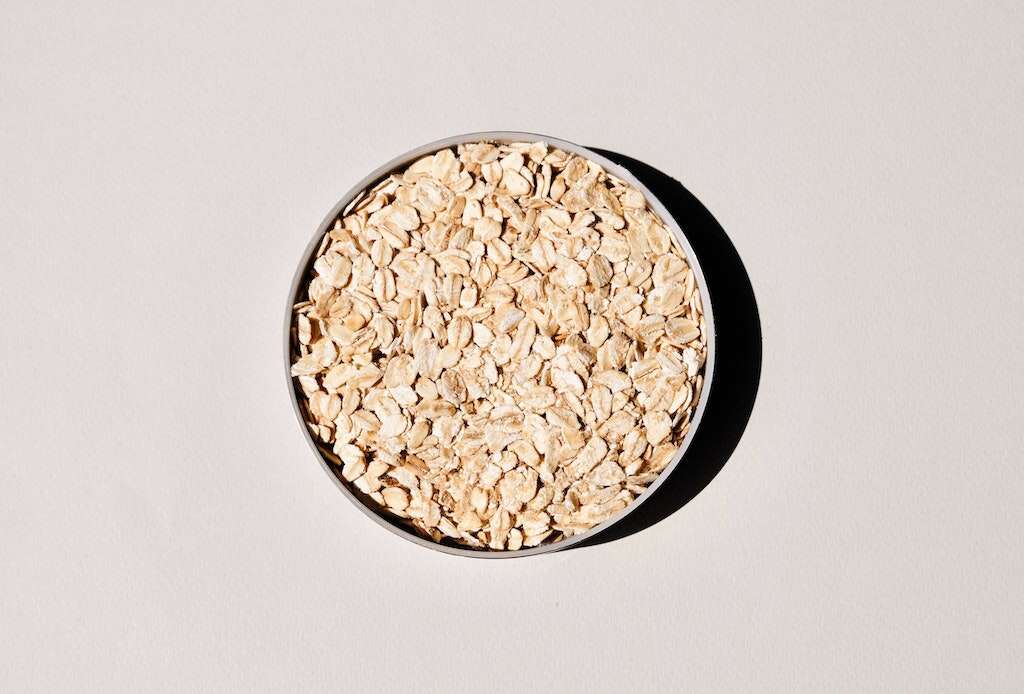
18. Spaghetti Squash
Like other members of the squash family, spaghetti squash is low in calories and high in nutrients. This large, yellow variety is a great source of fiber, beta carotene, and vitamins C and B6. With an interesting texture, spaghetti squash is also fun to eat.
Often used as a substitute for noodles, the flesh inside spaghetti squash shreds into pasta-like strands. The only potential downside to this type of squash is that it takes about 40 to 50 minutes to cook in a 400-degree oven.
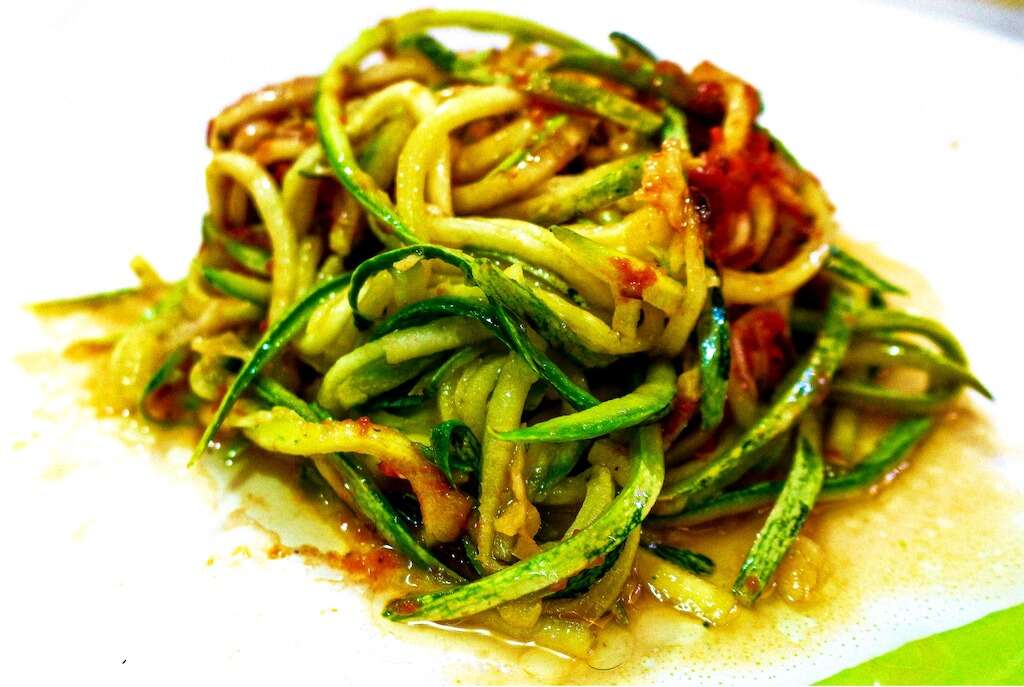
19. Acai Berries
Exceptionally high in antioxidants, acai is an Amazonian berry that's long been a dietary staple in its native land. In the U.S., acai berries have more recently gained popularity as a nutrient-packed food added to granola, yogurt and smoothies.
Harvested in grape-like bunches from acai palm trees, acai berries have a reddish-purple hue. Their tart, earthy flavor is often described as a cross between blackberries and unsweetened chocolate. Because these tropical berries are quick to spoil, they're almost always sold frozen or powdered.
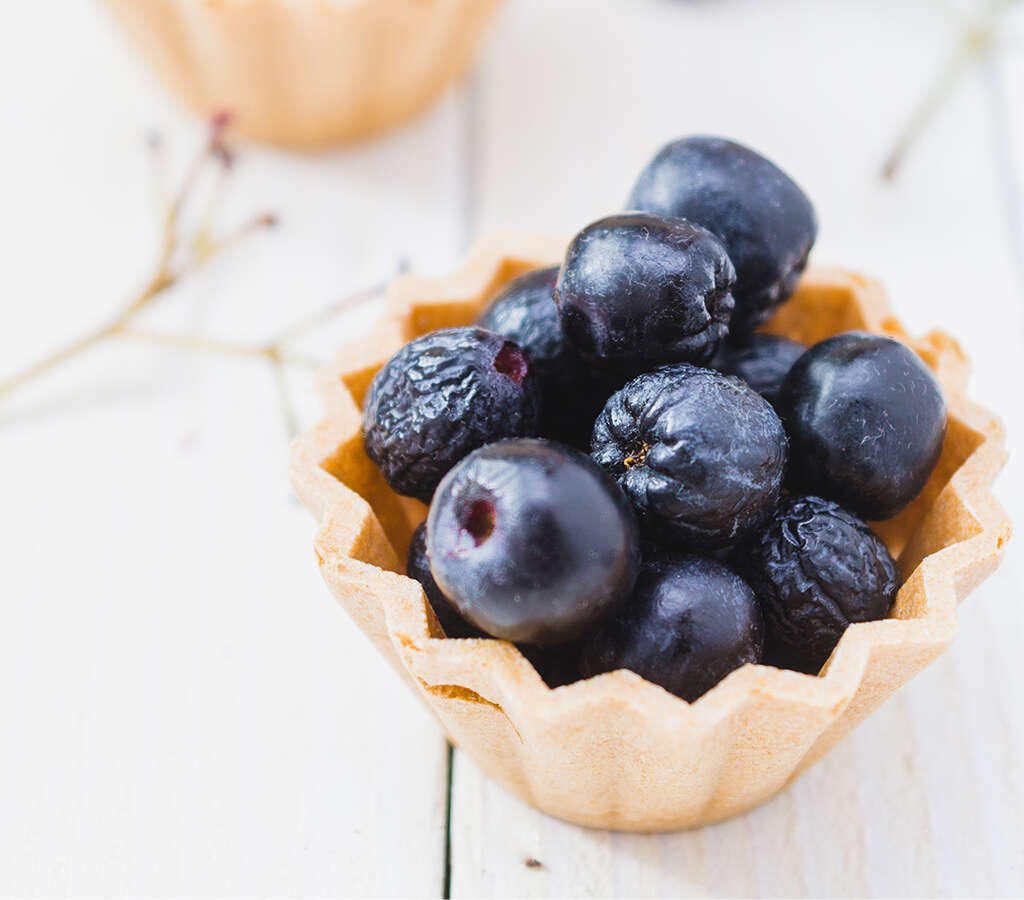
20. Ginger
Sweet and peppery, ginger has been prized as a medicinal and culinary ingredient for centuries. Healthwise, the root is commonly used as an aid for indigestion and nausea. However, it may also help people manage conditions such as osteoarthritis, menstrual pain, migraines and diabetes.
Much of ginger's medicinal properties come from gingerols. These bioactive compounds have powerful antioxidant and anti-inflammatory effects that continue to be researched. Fresh ginger may be added to sparkling water, teas, marinades, dressings and soups for a burst of flavor.

21. Ostrich
Ostrich may not sound appetizing to everyone, but there are plenty of reasons to try this exotic meat. A member of the ratite family of birds, ostrich is high in iron, protein and B12, but lower in calories than chicken or turkey.
When cooked, ostrich looks and tastes like beef, but with 2/3 less fat. It's inspected by the USDA and sold as steaks, fillets, roasts or ground. The most tender ostrich meat comes from the thigh, and it's best lightly grilled, pan-fried or roasted.

22. Tomatoes
The rich red color of tomatoes comes from lycopene, a powerful antioxidant that's also found in watermelon and pink grapefruit. Studies suggest that lycopene may help lower the risk of heart disease, cancer and other diseases associated with aging.11S;, Rao AV;Agarwal. ‘Role of Antioxidant Lycopene in Cancer and Heart Disease.’ Journal of the American College of Nutrition, U.S. National Library of Medicine, pubmed.ncbi.nlm.nih.gov/11022869/
It's easier for the body to absorb more lycopene from tomatoes when they're pureed, crushed or cooked. Because lycopene is fat-soluble, absorption is also enhanced when tomatoes are eaten with a fat source such as olive oil, cheese or avocado.
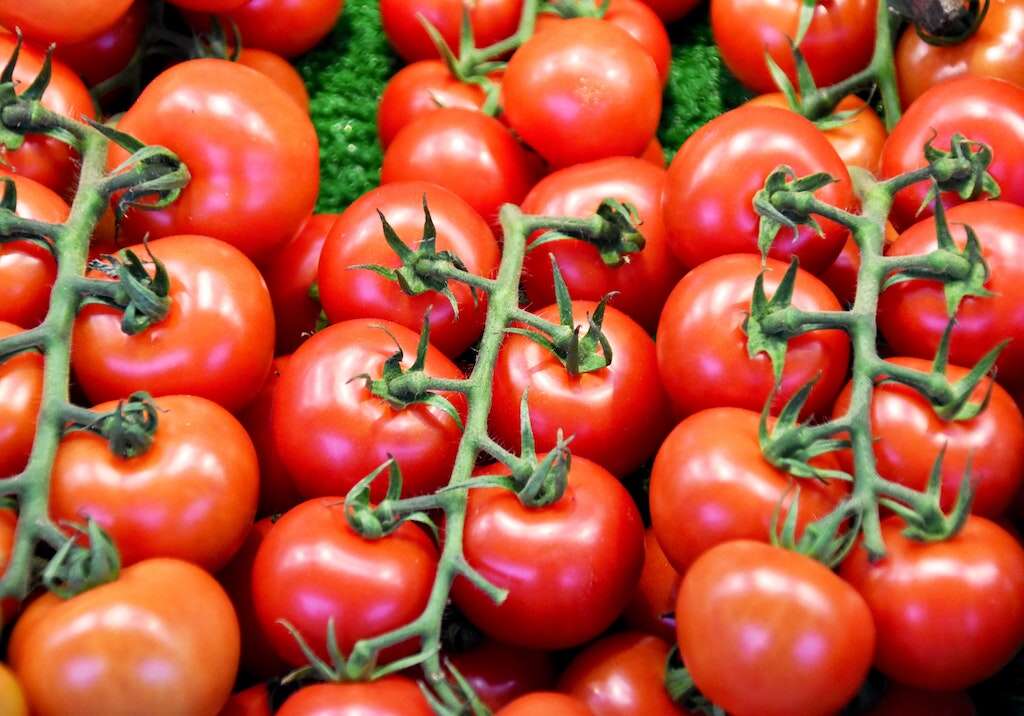
23. Kimchi
A Korean kitchen staple, kimchi is rich in health-boosting probiotics. Eating kimchi may help balance bacteria in the gut and strengthen the immune system. Researchers are also studying how kimchi may lower cholesterol levels.12Choi, In Hwa, et al. ‘Kimchi, a Fermented Vegetable, Improves Serum Lipid Profiles in Healthy Young Adults: Randomized Clinical Trial.’ Journal of Medicinal Food, Mary Ann Liebert, Inc., Mar. 2013, www.ncbi.nlm.nih.gov/pmc/articles/PMC3598433/
While there are hundreds of varieties of this traditional fermented side dish, kimchi is commonly made with a base of cabbage, radish, scallions and spices. People enjoy it on its own, on top of baked sweet potatoes or added to scrambled eggs.

24. Blueberries
Small but mighty, blueberries are loaded with phytonutrients that may help prevent heart disease, diabetes and some cancers. Studies have also linked blueberries to improved memory and healthier aging.13Ingram, Donald K. ‘Blue Versus Gray: Potential Health Benefits of Blueberries for Successful Aging.’ OUP Academic, Oxford University Press, 8 Apr. 2019, academic.oup.com/biomedgerontology/article-abstract/74/7/965/5445331
The pigments that give blueberries their bluish-purple color are antioxidants that protect the body from harmful free radicals. Wild blueberries, though smaller than conventionally cultivated berries, have twice the antioxidant capacity. Add blueberries to cereal, yogurt or oatmeal, or just enjoy them plain. Plus, they have less naturally occurring sugar than most other fruits.
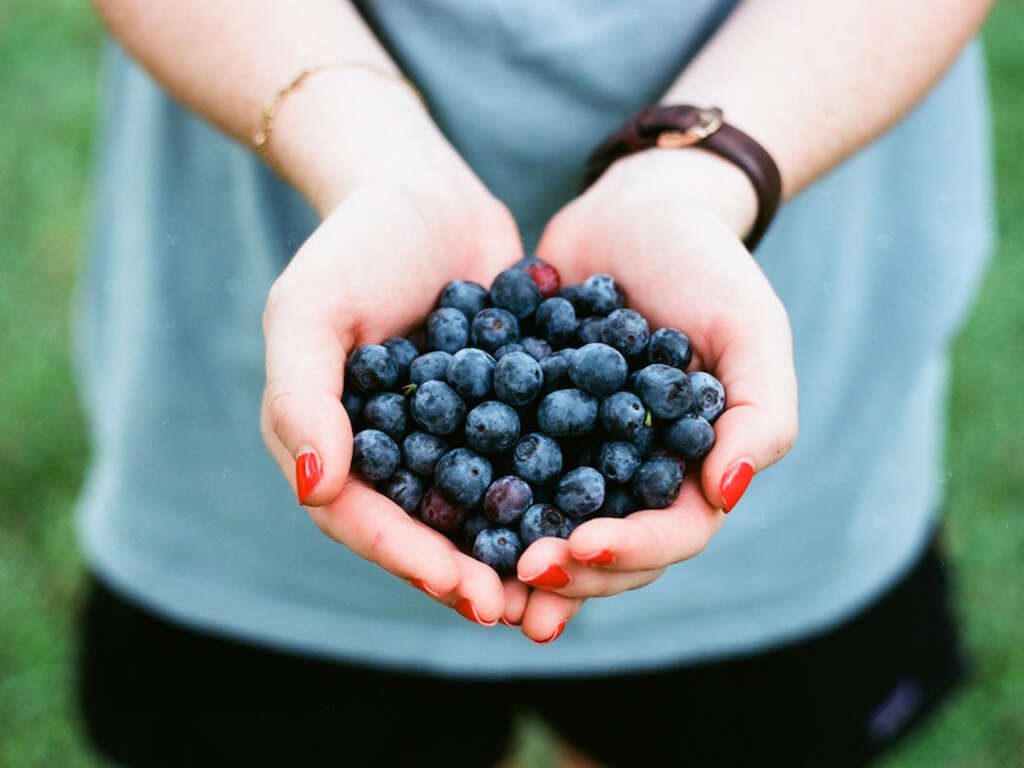
25. Kale
Dark leafy greens are universally healthy, but high levels of lutein make kale stand out from the rest. Working together with zeaxanthin, another antioxidant found in kale, lutein may help protect the eyes from sunlight damage and reduce the risk of age-related eye diseases such as macular degeneration and cataracts.
People can up their dietary intake of kale by adding it to salads, sandwiches and omelets. Those who find kale too bitter might try sneaking a handful into soups and smoothies.
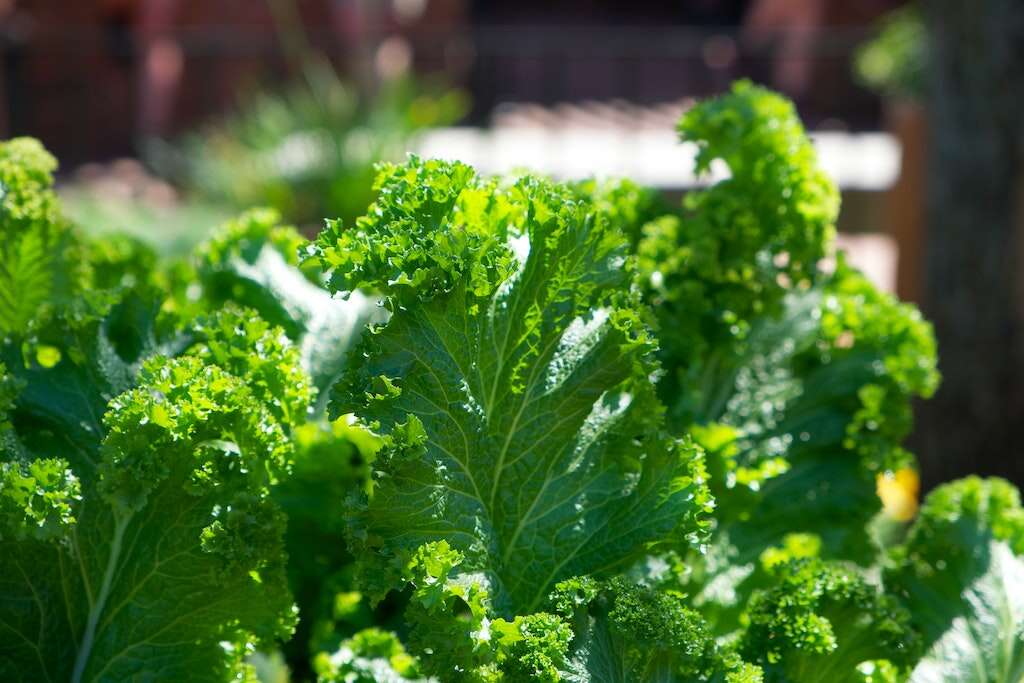
26. Turkey
As a lean protein, one three-ounce serving of turkey provides over 20 grams of protein with a small amount of fat. Turkey is also rich in many nutrients and vitamins, including potassium, niacin and selenium. Selenium plays a critical role in metabolism and thyroid function and acts as an antioxidant.
While some people assume white turkey meat is healthier than dark, the differences in calories and fat are small. In fact, most of the fat in dark meat turkey is the healthier unsaturated kind.

27. Sweet Potatoes
The more color people add to their plates, the better. In the case of sweet potatoes, the deep orange-yellow color indicates they're high in the antioxidant beta carotene. Converted to vitamin A in the body, beta carotene may help slow the aging process, boost immunity and support healthy skin and vision.
Sweet potatoes are rich in vitamin C and B6 and also provide a good source of potassium, magnesium and fiber. Compared to the average white potato, sweet potatoes are lower in calories and carbohydrates.
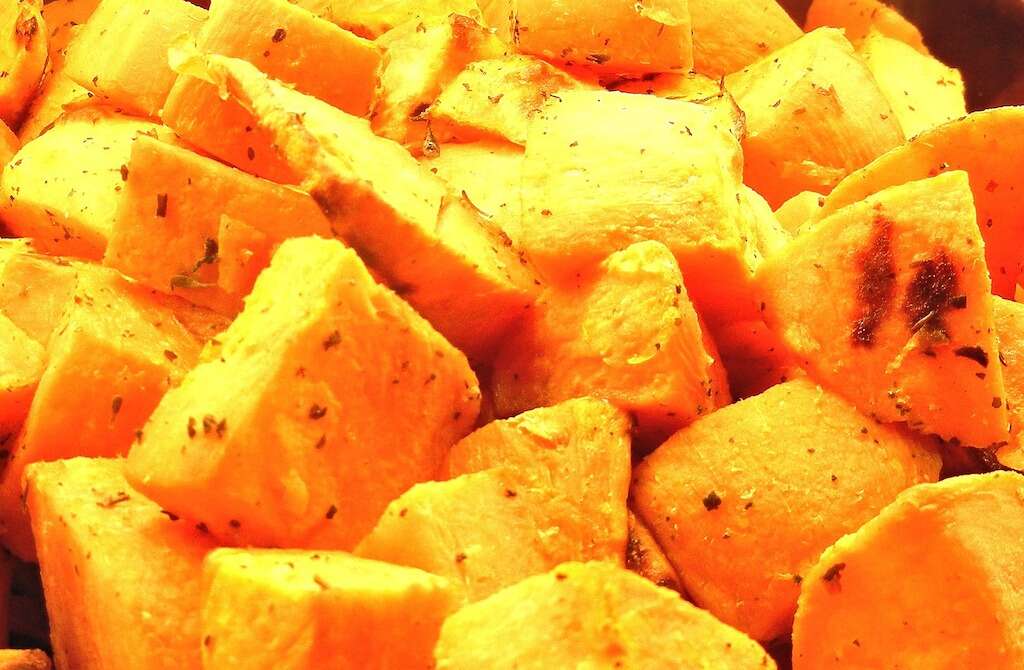
28. Mangoes
Known as the king of fruits, mangoes deliver a taste of the tropics along with 20 different vitamins and minerals. One 3/4-cup serving of mango provides 50 percent of the daily requirement for vitamin C, along with a good amount of vitamins A and B6. These three micronutrients are key to a strong immune system.
Depending on the time of year, different varieties of mangoes are available in supermarkets. Honey or ataulfo mangoes have a very small seed, so there's more juicy flesh to enjoy.
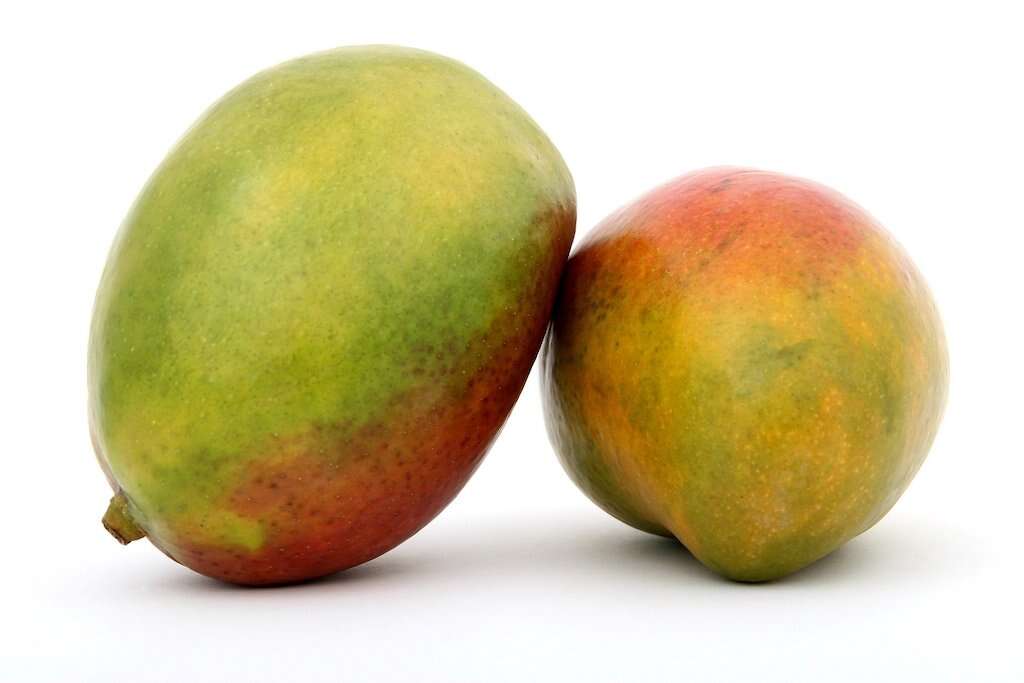
29. Walnuts
Many people are worried about eating too much dietary fat. However, when it comes to walnuts, fat is a good thing. They're the only nut that provides an excellent source of the plant-based omega-3 fatty acid ALA. This type of polyunsaturated fat helps the body absorb essential vitamins A, D, E and K.
Research shows that walnuts can be incorporated into the daily diet and actually help with appetite control.14‘Walnuts & Weight: What the Science Says.’ California Walnuts, 16 Oct. 2018, walnuts.org/health-topic/walnuts-weight-what-the-science-says/?back=health_topic_category-28 A daily serving is about 1/4 cup or 12 to 14 walnut halves.
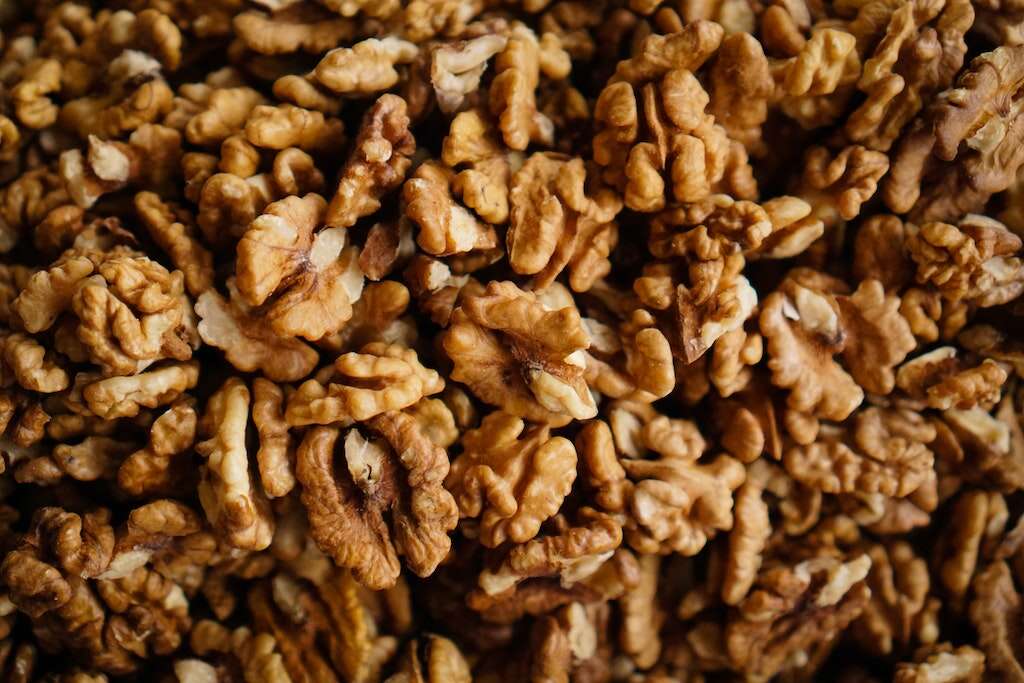
30. Cottage Cheese
Cottage cheese is a satisfying, low-calorie source of protein. In fact, ounce for ounce, it has about the same amount of protein as Greek yogurt. A one-cup serving of full-fat cottage cheese also provides 40 percent of the daily requirement for vitamin B12, which may support healthy nerves and blood cells.
Cottage cheese comes in small-curd, large-curd and cultured varieties. Cultured cottage cheese contains active cultures such as L. acidophilus and B. bifidum that may boost gut health.

31. Beets
The deep red-purple color of beets is a sign they're special. That jewel-toned hue comes from betalains, an uncommon plant pigment that boasts powerful antioxidant and anti-inflammatory effects.
Combined with fiber, potassium, magnesium, vitamin C and nitrates, beets provide a unique set of heart-protective nutrients not found in other produce. The root vegetable has an earthy flavor, but roasting brings out their natural sweetness. Beets can also be thinly sliced and slow-baked into crispy veggie chips.
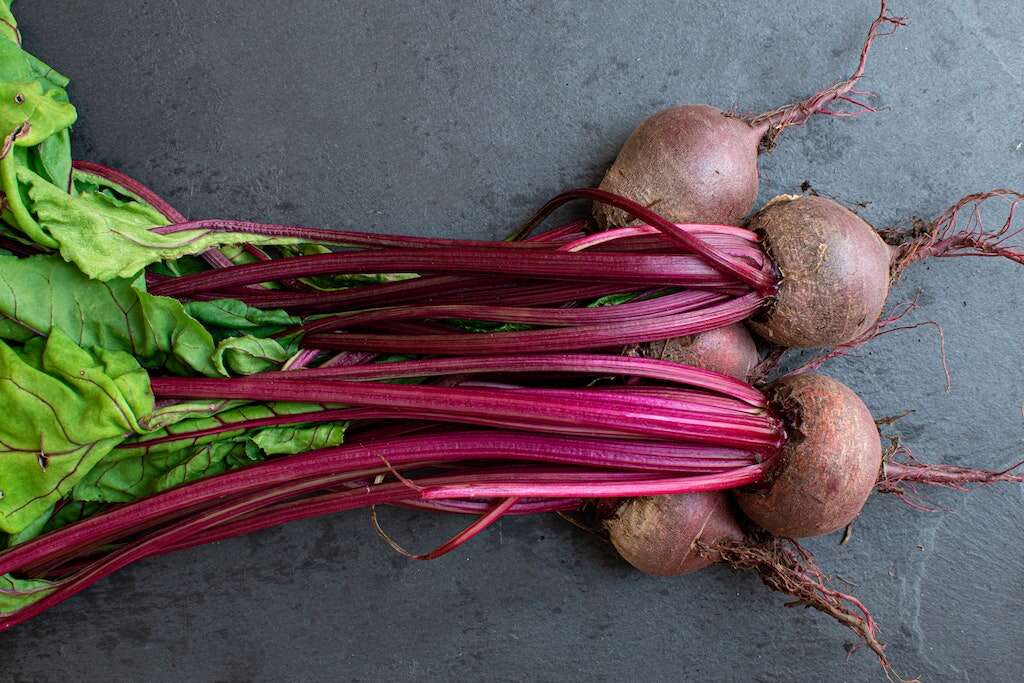
32. Lentils
High in protein and low in fat, lentils can be a healthy substitute for meat in a wide variety of dishes. Mild and sweet red lentils are best for purees, while brown lentils work well in soups and recipes calling for black beans. Firm and nutty, green lentils are the perfect addition to salads.
Like other legumes, lentils are rich in folate, fiber, iron, potassium and manganese. Studies show that lentils may reduce cholesterol levels in people with diabetes and protect women from breast cancer.15‘Lentils.’ The Nutrition Source, 28 Oct. 2019, www.hsph.harvard.edu/nutritionsource/food-features/lentils/
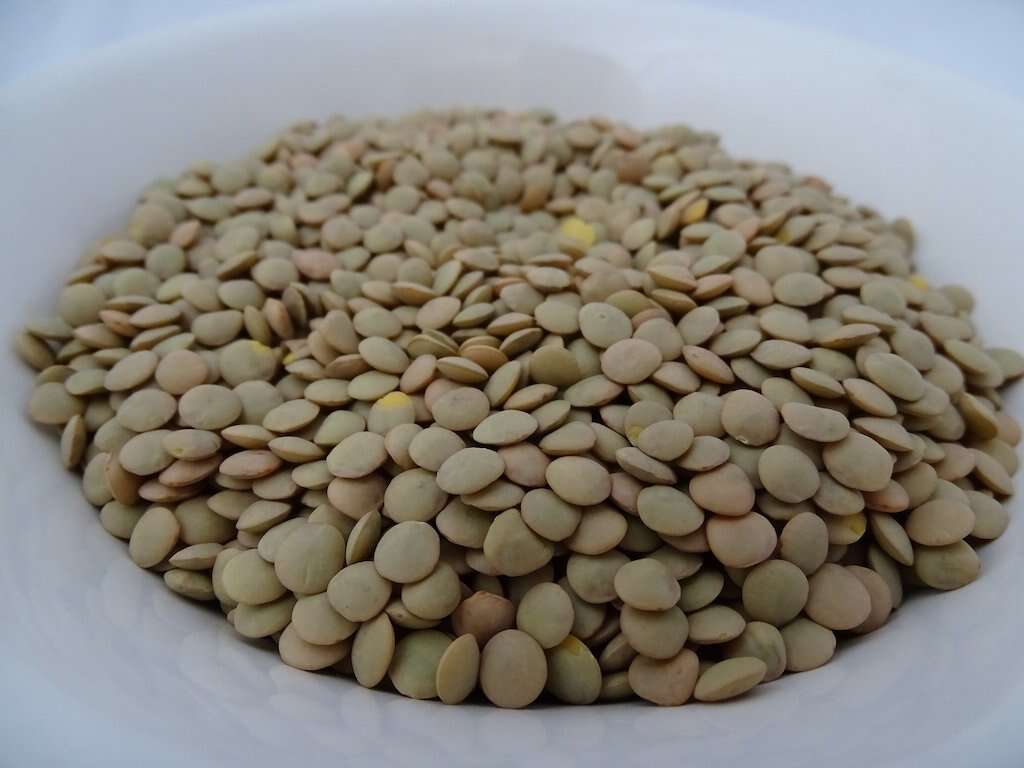
33. Yogurt
Yogurt offers one of the easiest ways to get the calcium and some of the vitamin D that bones need to stay strong. While there are many types of yogurt, Greek yogurt is favored by many people because it contains twice the protein of regular.
Plain Greek yogurt can stand in for sour cream or mayonnaise in most recipes, including savory dips and salads. Topped with berries or a drizzle of honey, plain yogurt also makes a deliciously healthy breakfast or snack.

34. Peanut Butter
A beloved pantry staple, peanut butter offers some surprising health benefits. While it's true a two-tablespoon serving contains nearly 200 calories and 16 grams of fat, 80 percent of that fat is unsaturated.
Similar to olive oil, the healthy fats in peanut butter may work to reduce LDL cholesterol and lower the risk of heart disease. Look for varieties with no additives other than a little salt and enjoy this concentrated form of nutrition in moderation.

35. Grapefruit
Like other citrus fruits, grapefruit is loaded with beneficial vitamins and minerals. One-half of a medium-sized grapefruit provides thiamine, folate, potassium, magnesium and 50 percent of the recommended daily value of vitamin C. This antioxidant boosts the immune system and may also help support collagen production for healthy skin, bones and gums.
Grapefruit also contains phytonutrient plant compounds that may fight cellular damage associated with cancer and aging. Commonly eaten for breakfast, grapefruit adds flavor and color to smoothies, salsas and salads.
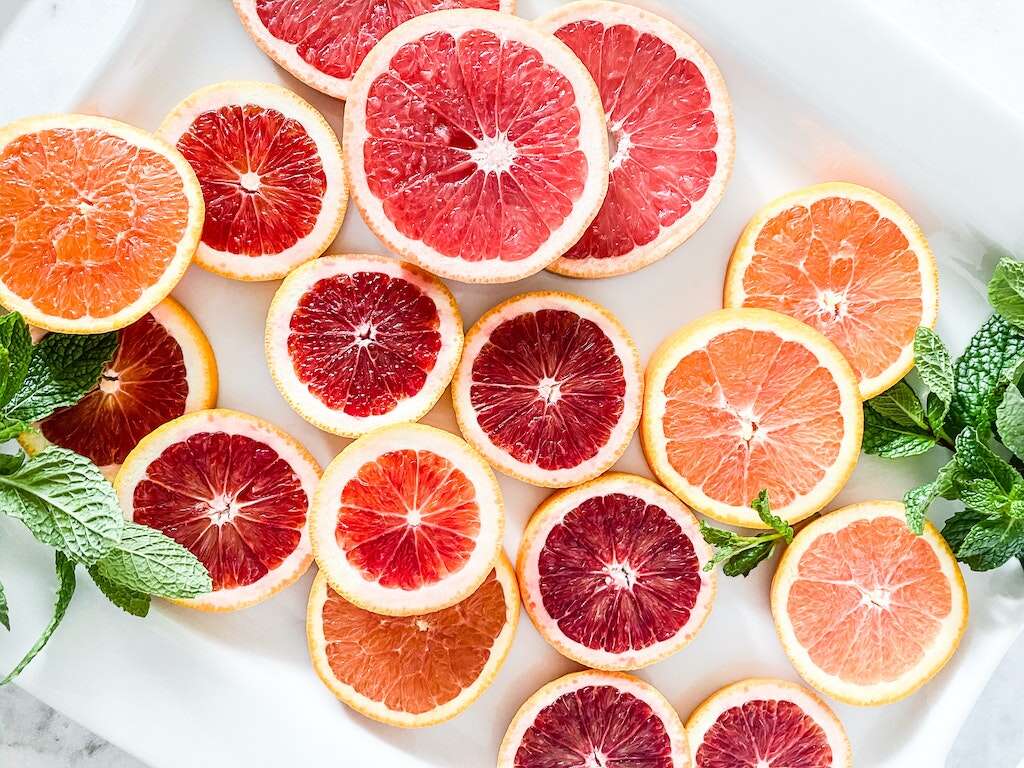
36. Grass-Fed Cow Butter
When compared to conventional butter, the grass-fed variety may provide a better nutritional profile and taste. It's made from the milk of cows fed only grass and forage instead of grain.
Research shows grass-fed milk and butter have lower levels of saturated fats and higher levels of healthful fats. These include omega-3 fatty acids and conjugated linoleic acids, which may help to reduce the risk of cancer.16Pustjens, Annemieke M, et al. ‘Characterization of Retail Conventional, Organic, and Grass Full-Fat Butters by Their Fat Contents, Free Fatty Acid Contents, and Triglyceride and Fatty Acid Profiling.’ Foods (Basel, Switzerland), MDPI, 31 Mar. 2017, www.ncbi.nlm.nih.gov/pmc/articles/PMC5409314/ Another type of fat in butter, butyrate, may work to fuel good bacteria in the intestines.
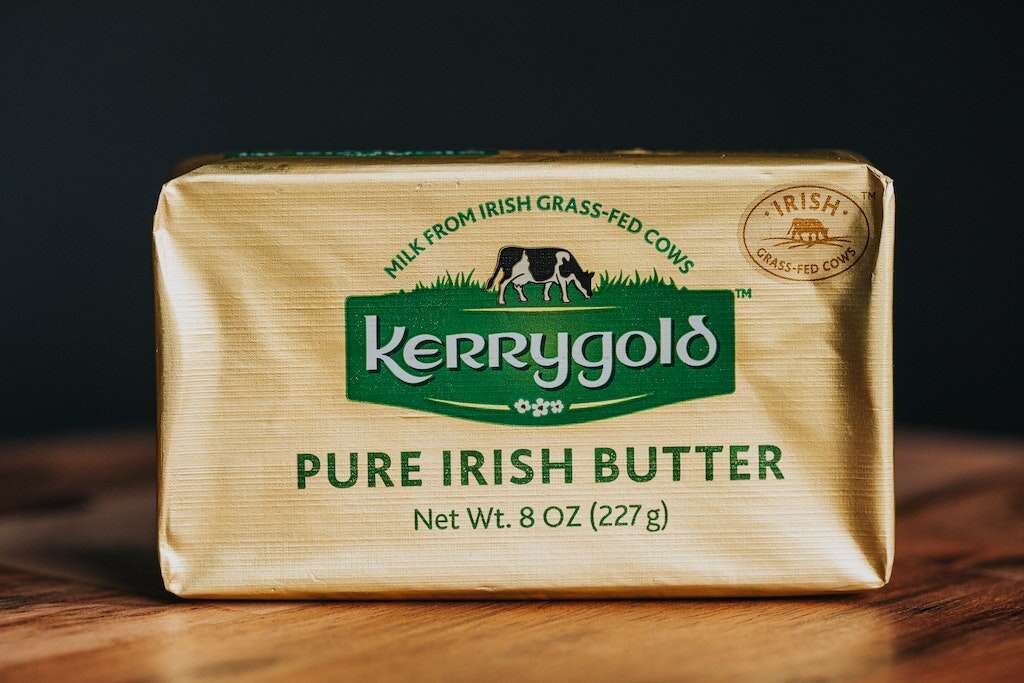
37. Eggs
Many people wonder if eggs are healthy or not. The confusion comes from the yolks, which are known for being high in cholesterol. But that doesn't make eggs a bad choice. They're also packed with protein, lutein and choline, which may help with memory.
The American Heart Association says one egg a day can be a part of a healthy diet for most people.17‘Are Eggs Good for You or Not?’ Www.heart.org, www.heart.org/en/news/2018/08/15/are-eggs-good-for-you-or-not For those concerned about cholesterol, opt for two egg whites instead. They provide almost all the protein without cholesterol.

38. Avocados
Avocados get a lot of attention for being a source of healthy monounsaturated fat. However, they also contain nearly 20 different vitamins, minerals and phytonutrients, as well as fiber. Fiber may help keep the digestive tract moving and keep people feeling full between meals.
Avocados are rich in potassium, an essential electrolyte that regulates the heartbeat and muscle contractions. When incorporated into meals, this creamy green fruit may also work as a nutrient booster to help the body absorb fat-soluble vitamins A, D, E and K.
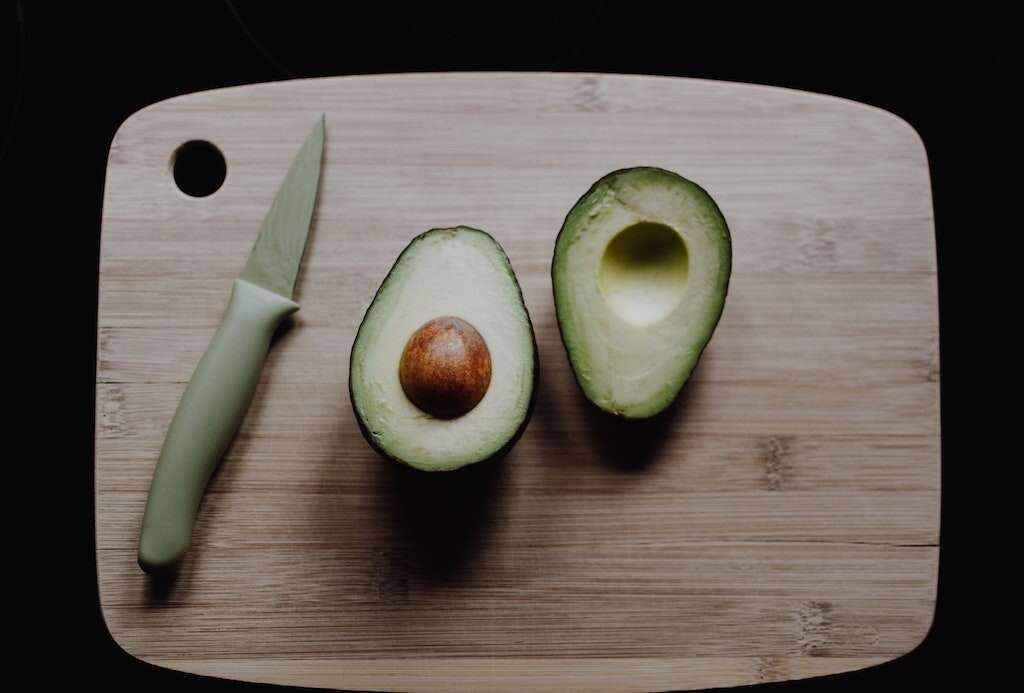
39. Chia Seeds
Chia seeds have very little flavor but may add a big boost of nutrition. They're the richest plant source of omega-3 fatty acids and a complete protein that provides all nine essential amino acids. People often add them to smoothies, salad dressings, puddings and baked goods.
Chia seeds may have a beneficial effect on cardiovascular health by regulating heart rhythms and blood pressure, preventing blood clots and lowering cholesterol. By slowing down digestion, chia seeds may also prevent blood sugar spikes.
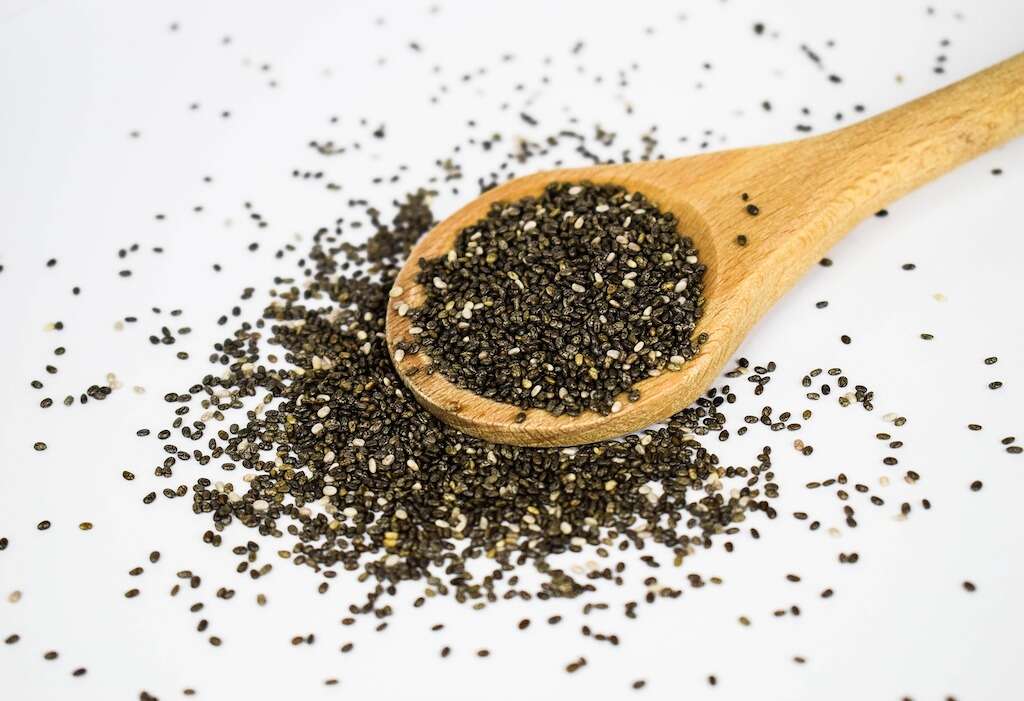
40. Broccoli
A healthy diet begins with a rainbow of fruits and vegetables. Green ones, like broccoli, contain antioxidants that may help protect the retina and preserve vision.
Broccoli is also rich in vitamin C, fiber, calcium, folate and a natural compound called sulforaphane. This potent disease fighter may be especially effective in preventing prostate and colon cancers. To retain the most nutrients, steam or sauté broccoli with a bit of olive oil.
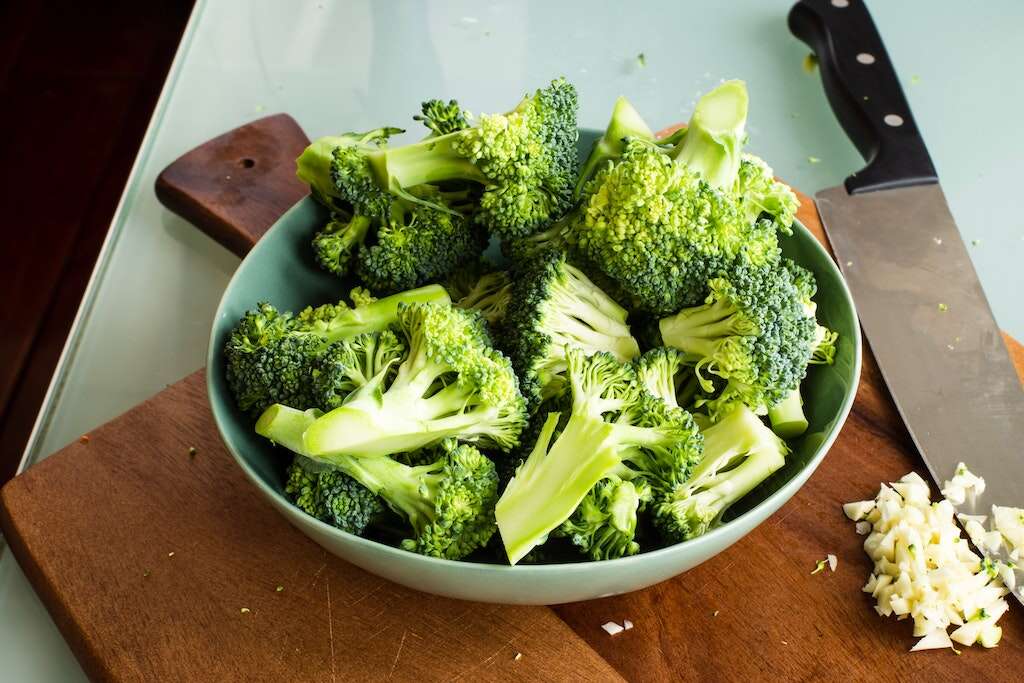
41. Cara Cara Oranges
While all citrus fruits have vitamin C, one Cara Cara orange offers 100 percent of the daily recommended intake. Vitamin C may be helpful during cold and flu season, but it may also reduce the risk of heart disease and cancer and assist with the absorption of iron.
Compared to conventional Navel oranges, Cara Caras are seedless, sweeter and slightly less acidic. While orange on the outside, these oranges are surprisingly pink on the inside, thanks to the antioxidant lycopene.
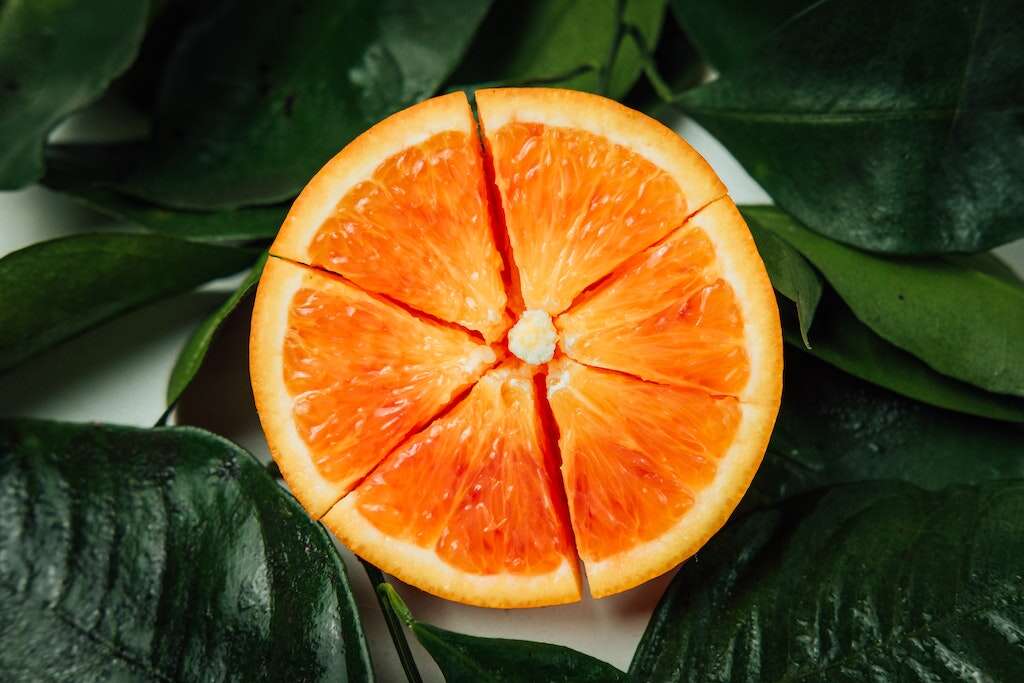
42. Whole Grain Bread
Whole grain bread is made out of grain flour that contains all parts of the grain kernel. The bran and germ parts of the kernel, typically stripped in white bread, are the parts that contain healthy fiber, protein, vitamins and minerals.
When eaten within a healthy diet plan, whole grains such as 100 percent whole-wheat bread may help to lower the risk of heart disease, stroke, diabetes, asthma and colorectal cancer. Whole grain bread also offers a fuller, nuttier flavor than white.
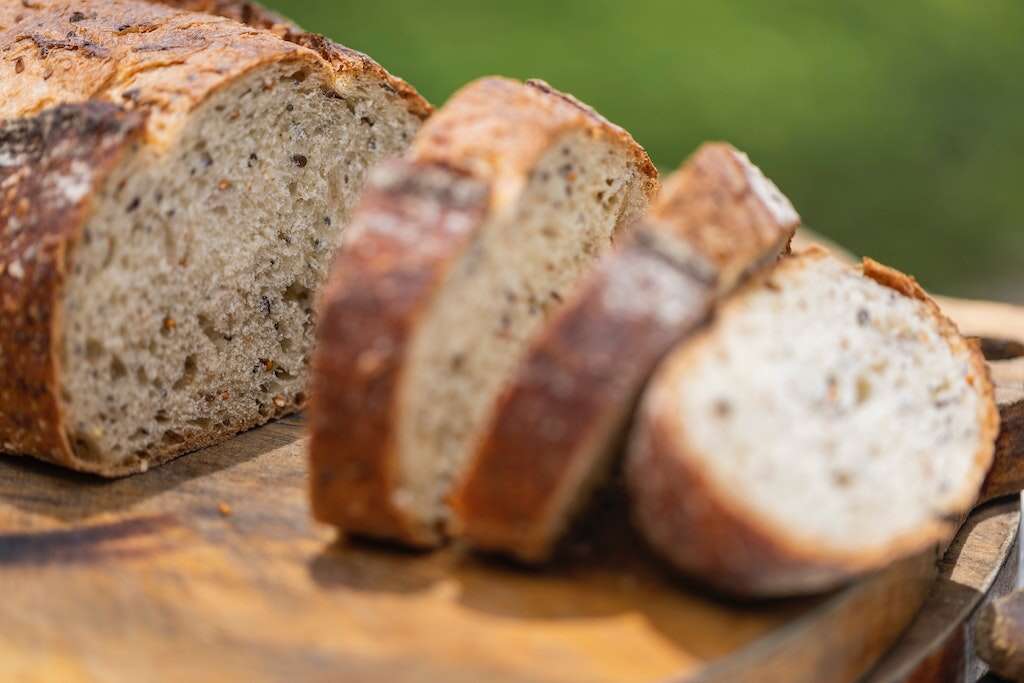
43. Parmesan Cheese
Authentic Parmigiano-Reggiano cheese from Italy is made with only fresh milk, salt and rennet. After a regimented aging process, hard cheese is naturally low in fat, free of carbohydrates and full of potential health benefits.
One ounce of Parmesan cheese boasts about 10 grams of protein. The high calcium content of Parmesan may also help counteract osteoporosis and maintain healthy blood pressure. Unlike many other dairy products, Parmesan is lactose-free and potentially easier to digest.
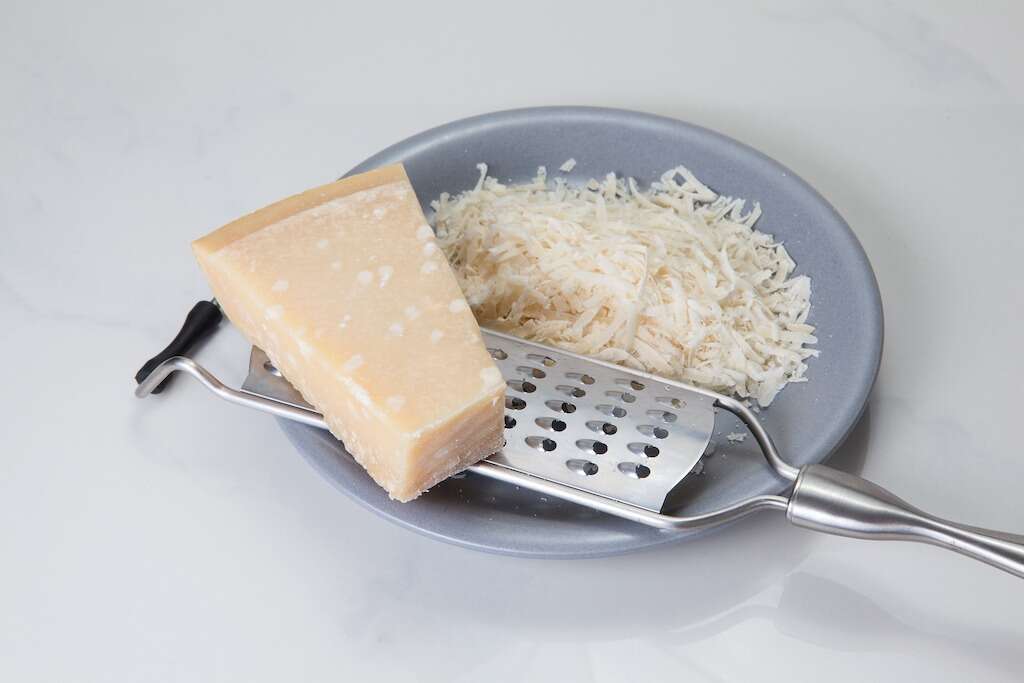
44. Garlic
A vegetable that's used more like an herb, garlic gets its pungent smell from allicin. This organic sulfur compound seems to have a positive effect on cardiovascular health, immunity and pain. To maximize health benefits, add garlic to recipes near the end of cooking.
Out of the kitchen, research shows garlic oil may work as an anti-inflammatory when rubbed onto sore joints and muscles.18Team, Wellness. ‘6 Surprising Ways Garlic Boosts Your Health.’ Health Essentials from Cleveland Clinic, Health Essentials from Cleveland Clinic, 7 Dec. 2020, health.clevelandclinic.org/6-surprising-ways-garlic-boosts-your-health/ Garlic also boasts antioxidant and antibacterial properties that may help treat acne and the itch-causing fungus of athlete's foot.
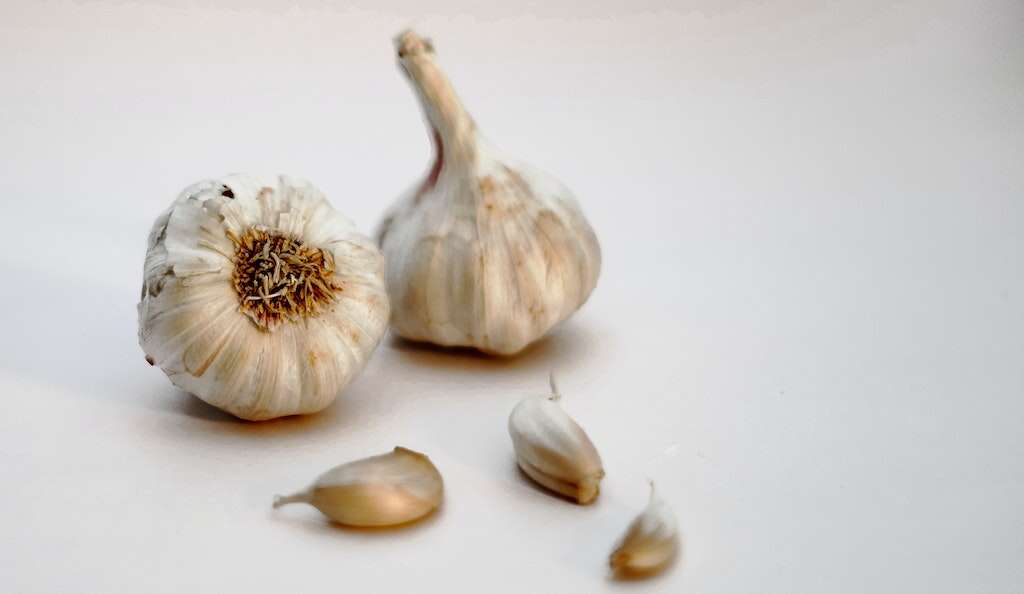
45. Mushrooms
Although considered by many to be a vegetable, mushrooms are not a plant food but a fungus. Eaten and used as a medicine for thousands of years, mushrooms contain polysaccharides, indoles, polyphenols and carotenoids that may have antioxidant, anti-inflammatory and anticancer properties.
Mushrooms grow in thousands of different varieties. The button mushroom is the mildest tasting and most common in the U.S. After purchasing, clean delicate mushrooms under gentle running water or wipe with a dampened paper towel to remove dirt.
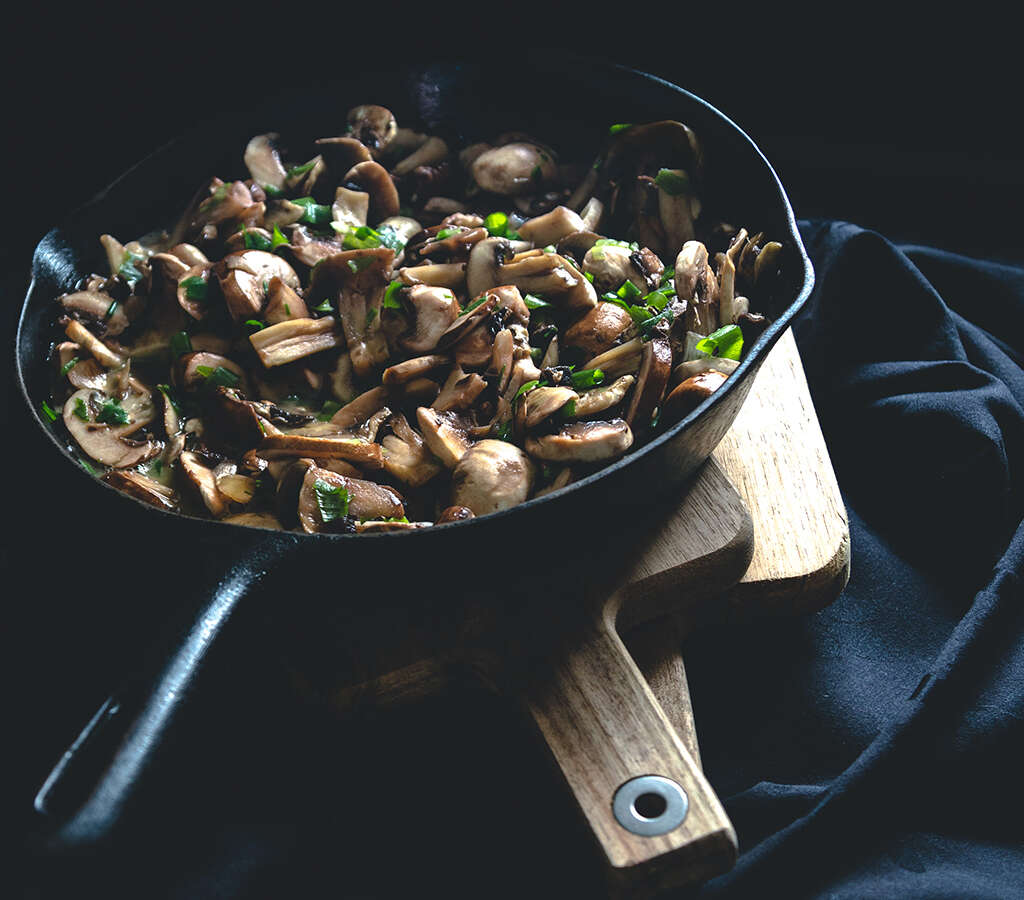
46. Eggplant
Best known as the star in eggplant parmesan, eggplant can actually be enjoyed in a variety of healthy ways. The teardrop-shaped nightshade vegetable provides the antioxidant nasunin and vitamins A and C, plus a good supply of potassium and fiber.
Eggplant gets its beautiful purple hue from compounds called anthocyanins. Anthocyanins may help to reduce the risk of heart disease and prevent cancer. Enjoy eggplant sliced and grilled or whipped into a savory baba ghanoush spread.
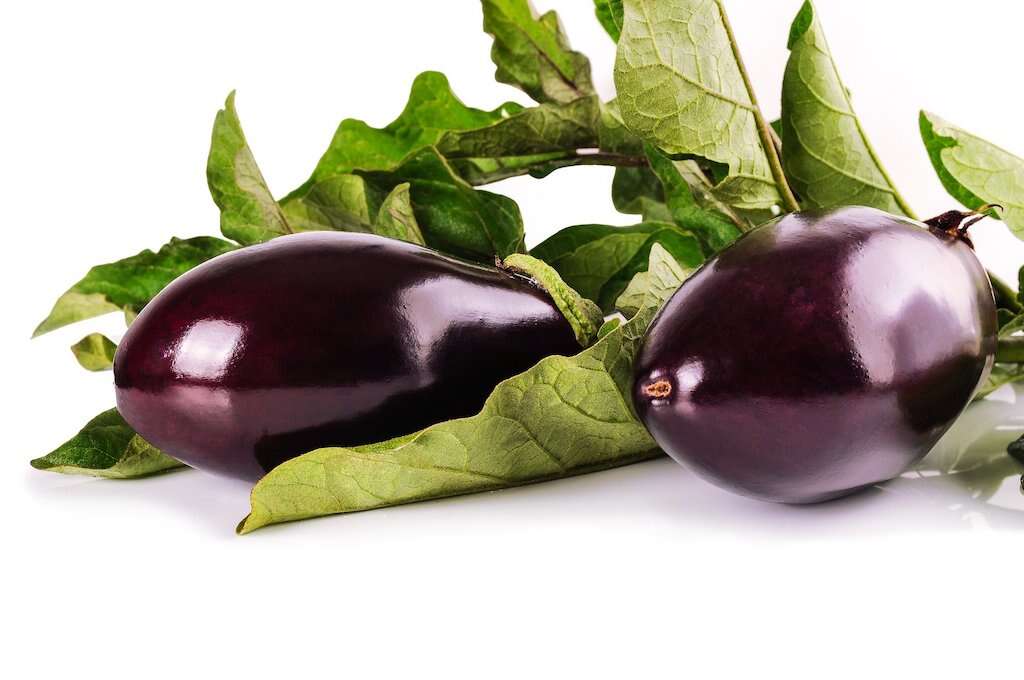
47. Coffee
Caffeine is the first thing most people associate with coffee. However, the typical cup of morning java is really a complicated mixture of more than 1,000 different substances. These include anti-inflammatory and disease-fighting antioxidants called quinines.
Studies show that regular coffee drinkers may be less likely to develop heart failure, Parkinson's disease, colon cancer, dementia and type 2 diabetes.19‘9 Reasons Why (the Right Amount of) Coffee Is Good for You.’ Johns Hopkins Medicine, www.hopkinsmedicine.org/health/wellness-and-prevention/9-reasons-why-the-right-amount-of-coffee-is-good-for-you Coffee may also have a protective effect on the liver and DNA.

48. White Tea
The second most popular beverage after water, tea comes in a multitude of varieties. However, some brews offer more health benefits than others. White tea may be more effective than other teas from the Camellia sinensis plant in fighting cancer, thanks to exceptionally high levels of antioxidants.
White tea also contains minerals, catechins and tannins, which may work to strengthen teeth and fight plaque. As the least processed variety of tea, white tea has a delicate flavor and low levels of caffeine.
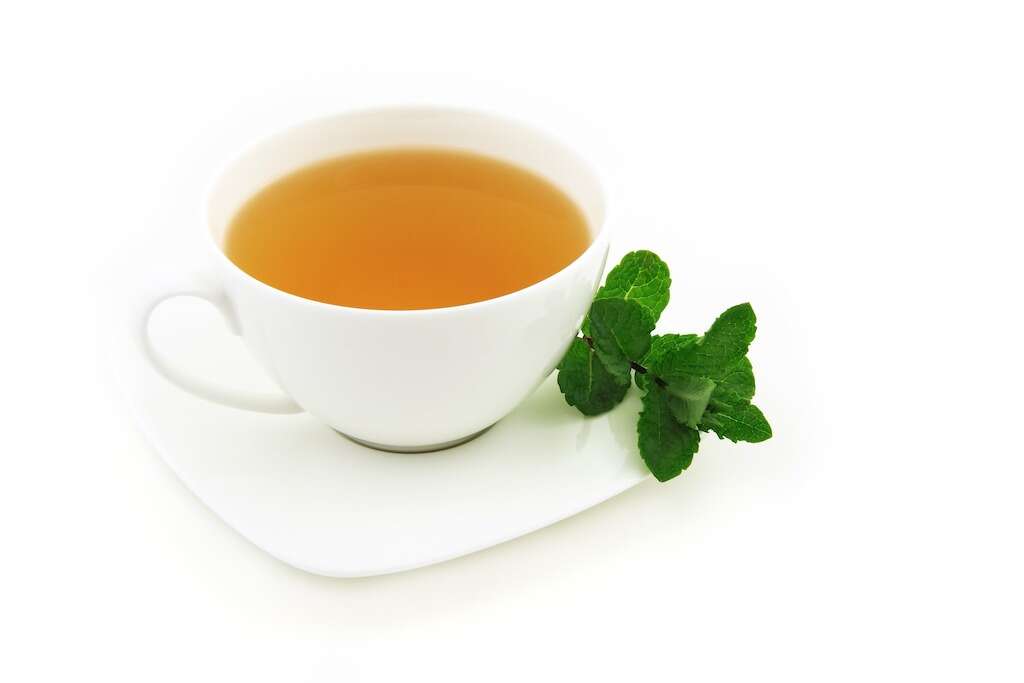
49. Pomegranate
A beautiful ruby red flesh berry fruit, pomegranates have been associated with health since ancient times. Modern science has discovered pomegranates have three times the antioxidants of green tea and red wine. Eating them may help to protect the heart, prevent cancer and lower blood sugar levels.
While the outer skin of a pomegranate isn't edible, the interior holds hundreds of juicy, crunchy arils. These arils, or seeds, can be enjoyed on their own or sprinkled on top of yogurt, quinoa, guacamole, hummus or salads.
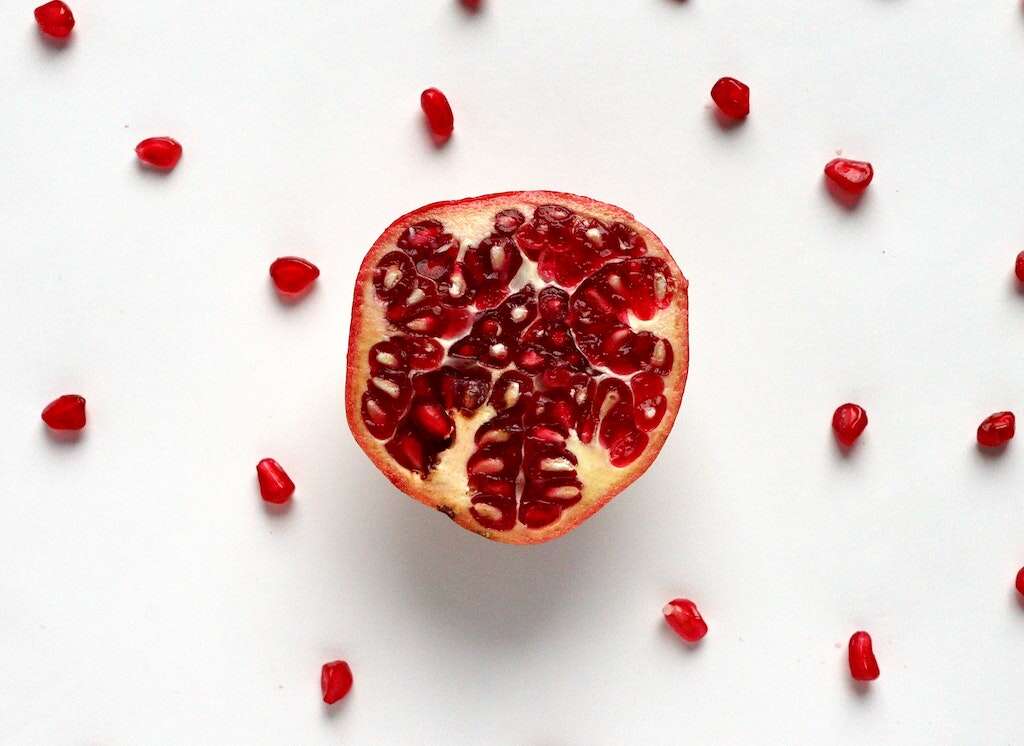
50. Dark Chocolate
Choosing dark chocolate over milk chocolate has its advantages. While not as sweet, the dark variety contains two to three times more cocoa solids. Cocoa is rich in flavanols, plant chemicals that may guard against cardiovascular disease by lowering blood pressure and preventing blood clots.
Dark chocolate is also rich in iron, copper, magnesium, zinc, phosphorus and other minerals. For the biggest health benefits, choose 70 percent dark chocolate or higher and stick to a treat of one to two ounces per day.
